























COME EXPERIENCE FALL AT FRIENDS HOMES
and see why joining the waiting list now gives you so much more to look forward to for your future.
Our fall tours, lunches and events are in full swing, creating delightful opportunities to see what life on campus is all about. Tour the updated amenities, state-of-the-art wellness center, fabulous dining choices, thriving campus trails and gardens. But most importantly, experience the welcoming, friendly residents and staff that make our community unique.
You’ll also see how to get priority access to available apartments, townhomes and cottages that are right-sized to fit your active lifestyle. So when you’re ready to make your move, your Friends Homes residence can be ready for you.
Scan the code, call or
learn more.



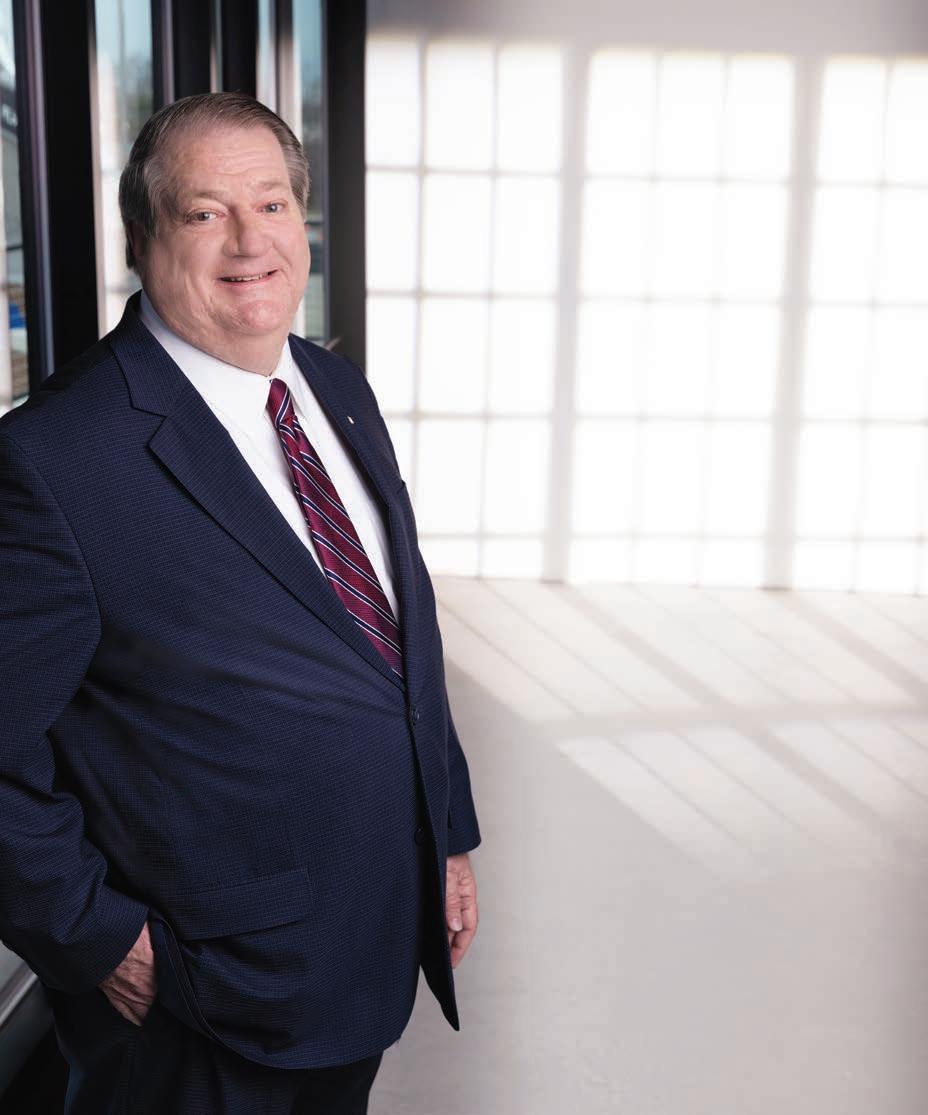
Right Here. Right Now. As

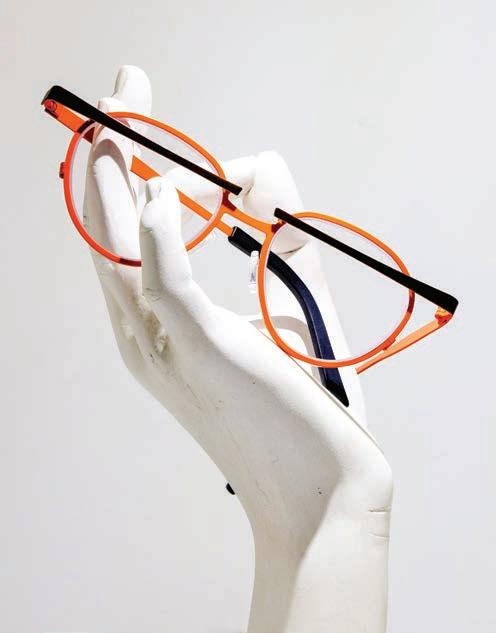



Volume 14, No. 10
“I have a fancy that every city has a voice.” www.ohenrymag.com
PUBLISHER
David Woronoff david@thepilot.com
Andie Rose, Creative Director andiesouthernpines@gmail.com
Cassie Bustamante, Editor cassie@ohenrymag.com
Jim Dodson, Editor at Large jwdauthor@gmail.com
Keith Borshak, Senior Designer
CONTRIBUTING EDITORS
Cynthia Adams, David Claude Bailey, Maria Johnson
CONTRIBUTING PHOTOGRAPHERS
Lynn Donovan, Amy Freeman, John Gessner, Bert VanderVeen, Mark Wagoner
CONTRIBUTORS
Harry Blair, Anne Blythe, Susan Campbell, Jasmine Comer, Ross Howell Jr., Billy Ingram, Gerry O’Neill, Liza Roberts, Renee Skudra
Stephen E. Smith, Zora Stellanova, Ashley Walshe, Amberly Glitz Weber
ADVERTISING SALES
Lisa Allen
336.210.6921 • lisa@ohenrymag.com
Amy Grove
336.456.0827 • amy@ohenrymag.com
Brad Beard, Graphic Designer
Jennifer Bunting, Advertising Coordinator ohenrymag@ohenrymag.com
Henry Hogan, Finance Director
910.693.2497
Darlene Stark, Subscriptions & Circulation Director 910.693.2488
OWNERS
Jack Andrews, Frank Daniels III, David Woronoff
In memoriam Frank Daniels Jr.









Yes, ghosts are real. Unless you’re my kid who’s going to bed — then no.

By Cassie Bustama Nte
“Ghosts
aren’t real,” I tell my 5-year-old, Wilder, as I tuck him in for the night, regretting that I let him watch Scooby-Doo. I don’t actually believe what I am saying, but parents will say whatever they have to to get their kids to just go to sleep. Just ask Adam Mansbach, author of the infamous Go the F*** to Sleep.
But back to the matter at hand. “Ghosts are very real,” I tell my husband, Chris, once Wilder is asleep. He doesn’t agree — and always sleeps like a champ. “Don’t worry. If I die first, I’ll prove it to you,” I say. “I can’t wait to haunt you!” (Actually, yes, I can.)
Do I have proof? No, but I have stories.
When I was a teen growing up in a small town in western Massachusetts, my godmother, Aunt Debbie — my mom’s sister, younger by just a year — would take me on weekend shopping trips, east to Boston or west to Stockbridge. She didn’t have kids of her own so she treated me like her daughter, buying me dangling jewelry she called “baubles.” We’d jam to the tunes of Gloria Estefan and Steve Winwood, and she’d regale me with stories from her life, which seemed much more dazzling and whimsical than my family’s boring white-picket-fence, suburban existence. What I didn’t understand at the time was that those seemingly exhilarating moments were part of her ups. She never shared the downs of her bipolar disorder with me.
Debbie was somewhat of a widow. She’d lost her husband, Michael, to ALS, but they’d been separated at the time of his diagnosis, remaining legally married for insurance purposes. As
his illness progressed, despite each having new significant others, their friendship became stronger than ever.
Immediately after his funeral, friends would drop in to share memories, drinks and laughs. But then she threw a party akin to the wild ones they threw when Michael was alive, certainly not your typical post-burial get-together.
On one particular godmother-and-goddaughter weekend as we’re on our way to the Berkshires, she spills the details. “I had a cake made with his face on it and put candles in his eyes,” she says. Already, I’m intrigued and we’re both giggling over the absurdity of it all. After all, this was 1995 and face cakes weren’t really a thing yet. “We turned off the lights and had a seance. One of his friends said, ‘Debbie, you shouldn’t do this! He’d be so mad!’”
That night, she continues, a vicious storm passed through, knocking out power and tossing a tree onto her little Honda sedan, which was parked in the driveway. Coincidence? Maybe, but there’s more.
Pictures fell off a stable living room shelf.
“The alarm by the hall closet kept turning on when I would walk by,” Debbie says. Not just any hall closet, but the place where she stored Michael’s suits, soon to be passed on to his younger brother. “I said, ‘OK, Michael. I get it — you’re telling me something!’” she says as we cruise down the highway. “I decided to rifle through the pockets and discovered a watch he didn’t want his brother to have.” And, as soon as she retrieved it, the alarm was silent.
On the morning of April 2, 1996, just as I was getting ready for school, my mom received a call. Her sister had taken her own life — just shy of her 40th birthday — the night before. Though tragic, it wasn’t a complete surprise, although we’d hoped things

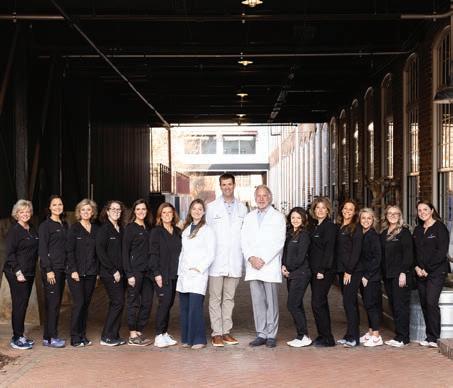


were turning around for her. She’d found a new love, bought a house with him and was, it appeared, happy. But you never know the demons someone battles.
In the months that followed Debbie’s passing, I looked for signs of her presence everywhere. I watched for lights to flicker or alarms to sound seemingly on their own. I played the Mary Chapin Carpenter cassettes that I inherited from her collection, hoping a message might come through. But no visitations followed and I decided she was finally resting in peace.
Ten years later to the day Debbie died, it is April 1, 2006.
I’m in Maryland visiting my parents with my first baby, 8-month-old Sawyer, who has slept solidly through the night since he was 6 weeks old. At midnight on the nose, something startles me awake: a noise over the baby monitor.
But Sawyer isn’t crying. In fact, he’s cooing and chatting away happily, as if talking to someone. And in that moment, I know exactly who: Debbie, who always loved babies, but never had her own. Debbie, who loved me like a daughter and would have loved this baby as if he were her own grandchild. Paralyzed by this realization — and slightly terrified, if I am being honest — I decide not to go to him. He babbles. He gurgles. He coos. And, as if lulled by an unsung lullaby, he drifts to sleep. I, of course, check on him later and find him snoozing peacefully, the corners of his mouth forming a sweet smile behind his pacifier.
So while I tell a little white lie to Wilder because I’m ready to go to bed myself, I do, in fact, think ghosts are real. And perhaps one day, hopefully 50 years from now if I am lucky, Chris will be telling our grown children and grandkids about the little ways I’m letting him know I’m still around. No matter what, I’ll make a believer out of him yet. OH
Cassie Bustamante is editor of O.Henry magazine.






By Jim DoDsoN
During the decades we lived on a forested hill in Mid-Coast Maine, October’s arrival was greeted with relief and joy.

To begin with, it signaled the final exodus of summer tourists, who left behind their spending money in the pockets of local businesses. The cost of a seafood supper roughly halved and it was possible to venture into town to lunch with friends without being caught in a traffic jam. By mid-month, even the annual invasion of “leaf peepers” was drawing to a close.
On our hilltop, we watched the 500-acre forest around us erupt into a dazzling pageant-fire of golds and reds, and wildlife grew more active as the days grew shorter.
I remember walking down our long gravel driveway to fetch the afternoon mail with my toddler daughter, Maggie, and pausing to watch a flock of ring-necked pheasants calmly cross our path, spectacular creatures completely unconcerned by our presence.
The family of white-tailed deer that inhabited our forest could be seen most October evenings finishing off the last of the hostas, which I had strategically planted at the rear of our property to keep them away from the house in high garden season. We were often visited by beavers and skunks and, on one memorable occasion, a gangly, young male moose harmlessly crossing our upland meadow to the late summer bog where bullfrogs croaked at night. The fireflies were gone by then, replaced by the lonely cry of coyotes deep in the woods.
October is a time of serious preparation in Maine. For the last time of the year, somewhere around mid-month, I mowed the half-acre of grass that surrounded our hilltop lilium and put away my beloved John Deere lawn tractor until next spring. I also cut down and raked out several large perennial beds, and split and stacked hardwood for an hour each day, preparing our wood pile for the cold days and nights just ahead. October was the month of our first evening fire, something we all looked forward to.
The last warm days of the month were a bonus. We packed up a picnic and took the kids to one of our favorite spots, Popham Beach State Park, a spectacular 3-mile sandy spit near the mouth of the Kennebec River, where a short-lived colony was established in 1607. Popham was — and probably still is — the most popular beach in Maine. But, by October, the beach belonged again to the locals. Our children, far-flung and now in their 20s and 30s, have fond memories of walking out to the famous “Rock Island” at low tide and swimming in the ocean, warmed ever so slightly by the summer’s passing. On the way home, if the timing was right, we stopped off at our favorite seafood shack at Five Islands for fried clams and blueberry ice cream, even as its owner was preparing to shut down for the season.
The decision to sell our beloved house in 2008 was possibly the toughest one we’ve ever had to make. A year before, however, we moved to North Carolina, foolishly believing that we would simply keep our precious Maine house and return to it each summer. But, after letting it sit empty with only a caretaker looking after it for one full winter, it became clear that this was a recipe
for trouble. Maine winters are tough on people and houses alike. We reluctantly decided to sell the place to a charming young couple from Connecticut who dreamed of making my dream house theirs.
The timing couldn’t have been worse.
Thanks to a national collapsing housing market and the start of the Great Recession, the sweet couple from Connecticut failed to sell their house in time, and we wound up selling to a couple from Massachusetts, who got a sensational deal. The wife adored the gardens and the quiet of the forest. The husband, however, complained that the house’s exposed hemlock beams made the interior “look unfinished.” He also didn’t like the closets or the notches on the rear of the utility door that memorialized the growth of our four kids.
I nearly backed out of the deal, but finally signed because the woman loved the place.
I stayed out of Maine for more than a decade, joking to friends that it was too soon to return and risk never coming back. That hilltop, after all, is where I designed, built and owned my first house, got married and had my children, created my first garden, and stayed longer than anywhere else. If you are curious to see why it will forever own a piece of my heart, try googling “Zillow, Topsham Maine, 12 East Merrill Road.”
Looking back, however, coming home to North Carolina was
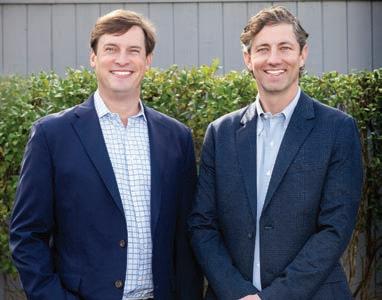


one of the wisest moves we ever made. Over 17 years, I’ve had the opportunity to create four arts magazines, publish nine books, and make scores of new friends while deepening my oldest friendships. Moreover, during the past decade, we’ve fully restored a lovely mid-century house in my boyhood neighborhood, just two doors down from the house where I grew up. Talk about a spiritual homecoming.
Fortunately, Octobers here are also spectacular. The murderous heat of summer is finally gone, the garden is winding down for another year, the night skies are clearer, and Piedmont North Carolina kindles its own breathtaking pageant-fire of leaves.
But every now and then I have dreams about our old house in Maine.
Invariably, it’s October in this dream and I’m walking through the empty rooms of our old place, wondering what will come of it now that I’m long gone. You see, I never went back there to see it.
Not long ago, however, my savvy wife, Wendy, proposed a cure for my October dreams.
Next year, either in September or October, we plan to rent a house somewhere on the coast of Maine.
Who knows? Maybe when I’m there I’ll dream about our wonderful house and garden back in Carolina. OH
Jim Dodson is the founding editor of O.Henry





















"A spirited forum of Gate City food, drink, history, art, events, rumors and eccentrics worthy of our famous namesake"
Drive down any country road as fall approaches, and you are likely to see a lot more Jerusalem artichokes than you could ever eat. The golden, daisy-like flowers gloriously polkadot almost every verge in Piedmont North Carolina. And, yes, they are native, though some label them invasive, but more about that later.
My introduction to Helianthus tuberosus was at my mother’s table, where my dad heaped Braswell’s sensational, brightyellow artichoke relish on his pinto beans as I still do. The turmeric-spiked relish probably originated in the South Carolina Lowcountry, where Mrs. Sassard’s version, like a lot of things in Charleston, “is world famous.”
for diabetics.)
Soon, upscale eateries were featuring Jerusalem artichoke orzotto graced with parsley-and-peanut pesto or truffled sunchokes with brie and honey.
If you’ve never had them, they are slightly sweet with notes of peanut, potato and water chestnut. Not, in fact, much like an artichoke, despite the name.

Jerusalem artichokes themselves are world famous, exported as a delicacy from the New World to France in the 1600s, where they were initially hailed, like so many novelties from the New World, as “dainties fit for queens” — but likely before the queen and her court actually tried them. By 1621, one writer complained, “which way soever they be dressed and eaten, they stir and cause a filthy loathsome stinking wind . . . and are a meat more fit for swine than men.” Not surprisingly, their popularity in Europe dimmed, and it wasn’t until recently that chefs, searching for tasty and unusual local produce, rediscovered them. They were quickly dubbed a superfood because of their nutritional value and their containing — keto alert! — inulin instead of starch. (Inulin is a carb related to the sugar fructose, but is largely indigestible, making sunchokes, as some marketing guru relabeled them, a good choice
“Jerusalem” purportedly arose when some half-witted Brit tried to pronounce the Italian word for sunflower, girasole.
“They can take the form of velvety purees, soups, hearty gratins, crunch crisps (French fries), stew fillings, creamy mash and even ice cream!” enthused one gourmet.
They are so prolific that Master Gardeners issue warnings. Like crabgrass — and every bit as aggressive — they spread underground by rhizomes. I’ve seen them take over not one but several adjacent raised beds in a community garden. One gardener reported transplanting two plants and ending up with 70 pounds. With each plant producing as many as 20 tubers, “as potatoes were requisitioned for World War II,” one writer says, “Jerusalem artichokes saved millions from starvation,” providing food for humans and livestock.
Harvested from October to March, they are available from time to time in farmers markets and grocery stores. Worried about the gastric distress? Through the miracles of modern science, some home economics scientist discovered that cooking them with lemon juice transforms them through something called acid hydrolysis, rendering them gone with the wind.
— David Claude Bailey
“A camera lies,” says Greensboro artist James Celano, who graduated from the Pennsylvania Academy of the Fine Arts more than 40 years ago. Known for his oil paintings of still life, figures and landscapes, Celano says he prefers to paint from life and can tell when an artist is working from a camera image. There are giveaways, he says, such as an exaggerated foreground that disrupts the scale. But the biggest reason he avoids it? “I find that work very flat emotionally.” A born-and-raised northerner, Celano and his wife, Diane, made the Gate City home over 30 years ago, bringing with them their toddler son and their own textile design business, Diane Celano Studios, which serviced clients such as Burlington Industries. “That’s how we paid the bills and kept me independent and free from having to depend on galleries.” Celano converted their home’s two-car garage into a studio space.

It’s there that he sets up objects and paints his still life oils. Dollface, seen here, is part of a birds-eye view series and will be part of an exhibition at Ambleside Gallery. “It’s been about 15 years since I’ve exhibited in Greensboro,” says Celano. While he’s participated in GreenHill’s Winter Show, this is his first solo exhibition here in a long time. He’s gathered 26 new paintings, most of them still life, that will be on display from October 4–31, with an opening reception from 6–9 p.m. on October 4.
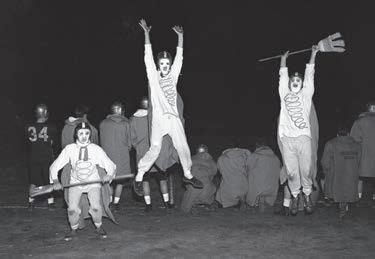
Feeling witch-crafty? Go homemade with your Halloween costume this year. Give it a whirl — just as these Grimsley Whirlies once did back in 1949.

If you’ve walked into The Art Gallery (TAG) at Congdon Yards in High Point recently, you may have already spied the Watercolor Society of North Carolina Exhibition, a juried show featuring 69 paintings created by its members. On September 29 — ahem, before we went to press — the best in show was selected by this year’s juror, renowned watercolor artist Lana Privitera. Originally from Spain, Privitera is a signature member of both the National and American Watercolor Societies. Since we couldn’t yet share the show’s winner, we’re showing off what this judge is capable of. Some Cups and Polka Dots is not a photograph. Despite what your eyes may tell you, it’s a watercolor on paper. Frankly, her painting of dishware looks more realistic than the photos our iPhone 13 snaps — obviously a result of considerable talent combined with epic patience. It “went through many stages and many weeks of work before I felt that the composition and the balance of colors, values and texture were cohesive and interesting,” she reflects. Plus, there’s a lot of behind-the-scenes work before the paintbrush tip ever hits the paper. "Coming up with a unique composition and theme that might also appeal to other people is not easy,” says Privitera, “so the planning stage of any of my watercolors often takes more time than applying the many layers of paint themselves.” So, what was Privitera looking for in a winner? Someone who, like her, “takes their time creating unique and wellbalanced compositions.” As for her selection, you’ll just have to head over to TAG to see the piece she thought brushed with greatness. The exhibit ends Oct. 31. Info: tagart.org/exhibits/ watercolor-society-of-north-carolina-exhibition.
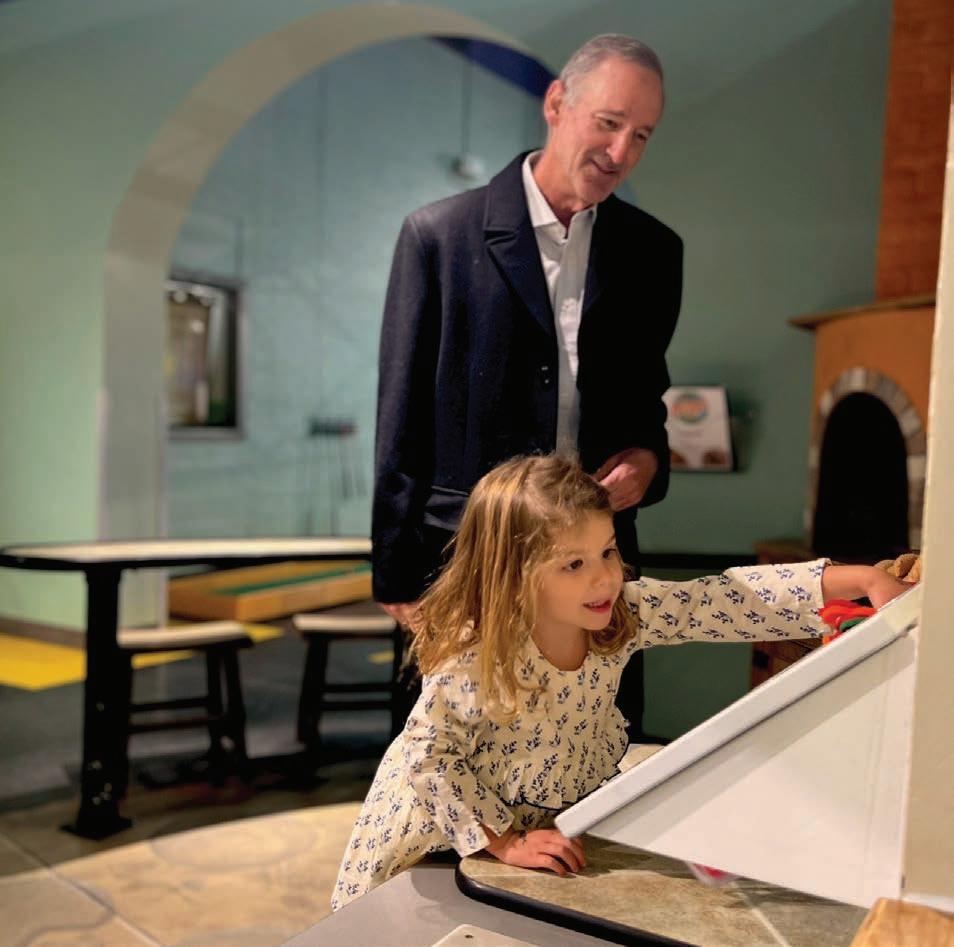
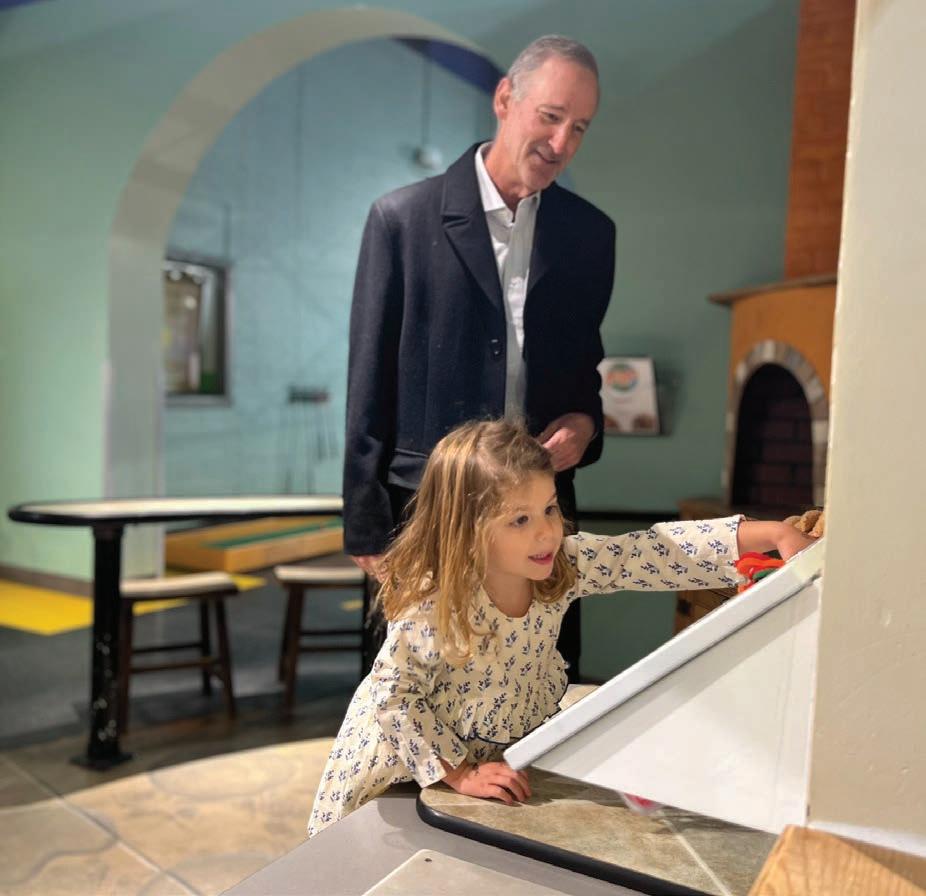


With the holidays just a couple months away, and the cooler, shorter days creeping in, October is the ideal time to begin a new crafty hobby — one that results in homemade gifts for everyone on your gift-giving list.
Cross Stitch: Start with the basic “X” and grow from there. Soon, you’ll be whipping out adorable pieces with charming sayings like our personal fav: “What doesn’t kill you gives you a set of unhealthy coping mechanisms and a dark sense of humor.” Bonus, you can tell your dentist you do, in fact, floss every day.
Canning: How about them apples? Turn ‘em into jam, jelly or applesauce. FYI, stock up. Because no matter what Baby Boom had you believe, 2,537 apples = 3 jars of applesauce (approximately). Apples not your jam? Try pickled beets or pumpkin butter. Yes, you can.
Candle Making: Hit up your local thrift shops for unique vintage glass vessels. Fill ‘em with soy wax and your own custom scent. Hints of bourbon, leather and cuban cigar? We call that one “Grandpa’s recliner.”
Witchcraft:


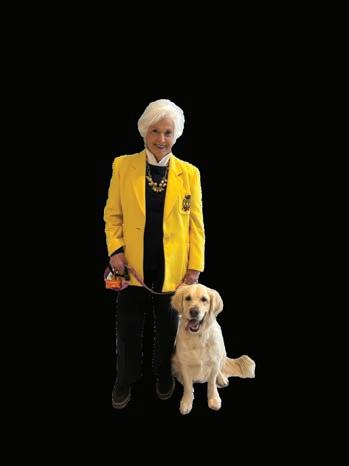








At H/K/B Cosmetic Surgery, we stand at the forefront of health, knowledge, and beauty, committed to helping individuals enhance their natural beauty while prioritizing their health and safety.

INTRODUCING ELLACOR
Experience ellacor, a minimally invasive skin rejuvenation treatment that uses micro-coring technology to smooth and tighten skin without surgery. Erica, PA-C, our skilled injector and laser specialist, ensures exceptional results with every ellacor treatment.



(September 23 –October 22)
When the shoe no longer fits, no amount of stretching or bending will change that. This year has given you loads of opportunities to release what no longer serves your highest path. And with the solar south node eclipse in your sign on October 2, suffice it to say that this month is going to be more of the same — uncomfortable yet, ultimately, liberating. A word of advice on moving forward: You’re going to want arch support.
Tea leaf “fortunes” for the rest of you:
Scorpio (October 23 – November 21) Be the squeaky wheel.
Sagittarius (November 22 – December 21)
Dog-ear the page for later.
Capricorn (December 22 – January 19) Best not to download the app.
Aquarius (January 20 – February 18)
Lie down if you start feeling dizzy.
Pisces (February 19 – March 20) Hint: They can’t read your mind.
Aries (March 21 – April 19) Book the trip.
Taurus (April 20 – May 20)
Bypass the candy corn.
Gemini (May 21 – June 20) It’s time to call the shots.
Cancer (June 21 – July 22) Write a love note to yourself.
Leo (July 23 – August 22) Prepare for liftoff.
Virgo (August 23 – September 22 Sometimes more is more. OH
Zora Stellanova has been divining with tea leaves since Game of Thrones’ Starbucks cup mishap of 2019. While she’s not exactly a medium, she’s far from average. She lives in the N.C. foothills with her Sphynx cat, Lyla.
• Offering safe & professional riding & driving instruction
• Brand new indoor riding arena
• Private or group lessons ages 6 & up
• Tiny tot lessons
Located approximately 15-20 minutes from most areas in Kernersville, Greensboro and Burlington areas
“No hour of life is wasted that is spent in the saddle.” Winston Churchill
5838 Thacker Dairy Rd Whitsett, NC 27377
Scheduling Phone Number: Call or Text 401-829-0863

Heritagestablesnc@aol.com | heritagestablellc.com
Owners: Bryan & Katy Earehart | Head Instructor: Hannah Sette


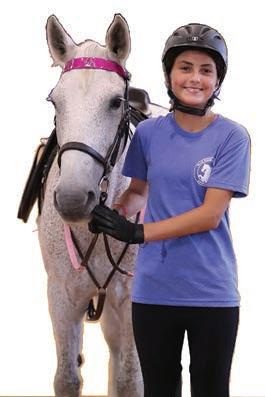
Halloween costumes have gone to the dogs . . . and cats . . . and hamsters . . . and ferrets . . . and bearded dragons
By m aria JohNsoN
Two years ago, Millie was a ladybug for Halloween.
She wore a smart red-and-black velour jacket, cinched at the waist, with a shawl collar that pooled elegantly around her neck.
OK, it wasn’t really a shawl collar. It was a ladybug hood with antennae that Millie, a petite hound, kept shaking off because she can’t stand things on her ears.
The point is, red is Millie’s color, and she was quite fetching when I took her to the annual dog-o-ween parade in my mom’s townhouse community, which is not officially a retirement village, but is, shall we say, very silver.
As a result, small dogs are plentiful. So one Sunday afternoon before Halloween, residents gussy up their pups and take a lap around the neighborhood, stopping at homes where the few non-dog-owners sit outside with treats.
The dogs gobble as they go. They remind me of the chunky trickor-treater who once came to my childhood home.
“Where’s your bag?” my dad asked as he doled out candy bars.
“Right here,” the kid said, slapping his belly with both hands.
Unlike the belly slapper, who snarfed his Baby Ruth as he walked away, the dogs at dog-o-ween usually inhale their first treats on the spot then stare down the giver, implying that a second, third or — why not? — fourth treat is customary.
Sometimes, the furry beggars get downright aggressive, snouting their way into a bag of Beggin’ Strips that’s held too close.
If a small human tried this with, say, a bag of fun-size Snickers, he would end up in a doorbell video on social media the next morning with the plea, “DOES ANYONE KNOW THIS CHILD?”
For dogs, though, people respond with a grace reserved for fourlegged animals.
“Ha-ha-ha,” they say. “You scamp!”
This kind of cheerful generosity is more in line with the origins of dressing up at Halloween, which some historians trace back to the 19th-century Scottish practice of “guising,” or putting on costumes and performing in exchange for food and drink.
Over in Germany, they played a similar game, “Belsnickeling,” which called for children to don masks and costumes at

Christmastime. If no one guessed their true identities, the tykes were rewarded with food.
Going back even further in time, the ancient Celts — who lived across what’s now Great Britain — observed an autumn festival called Samhain (pronounced SAH-win).
These pagan partygoers dressed as ghouls to blend in with the mischievous ghosts they believed roamed the earth during harvest time, when the veil between living and dead was the thinnest.
The locals lit bonfires and left food, drink, crops and other offerings to appease the spirits.
You could draw a couple of conclusions from these traditions.
One: There wasn’t a whole heck of lot going on in Western Europe back in the day.
Two: People are happy to play dress-up if there’s an immediate payoff, such as food, drink or not getting swept off to the netherworld.
The same reward system goes for dogs. Because Millie associates wearing a Halloween costume with getting food, she doesn’t seem to mind being dolled up.
Last year, she wore a simple jester’s collar, partly because of the ear sensitivity issue and partly because I didn’t make enough time to shop for a proper costume. This year, I started early.
There are so many choices.
For several years, pet owners were limited to dog costumes and only a smattering of cat costumes, which makes sense. Dogs will work for food, even if it means wearing a wonky costume. Cats, not so much.
If I see you on Halloween, bloodied and dressed in tatters, I will not assume that you’re headed to a party dressed as a zombie. I will assume you tried to dress your cat as a Minion.
Nevertheless, the selection of get-ups for cats and dogs has mushroomed to hundreds, enough to break into subcategories. One pet supply website has costume tabs for “Trending” (stegosaurus, happy cow, granny); “TV and movie” (Buzz Lightyear, R2D2, Cookie Monster): “Funny” (snail, werewolf, hula girl, skunk); and “Career” (mail carrier, UPS driver, chef).
Many are so-called front-walking costumes featuring pants that make a dog’s front legs look like human legs, along with stuffed arms that stick out and hold a prop.
So if you squint your eyes and pretend you don’t see the other 95
percent of your neighbor’s Bichon frisé, you could believe that a 1-foot-tall UPS driver in dire need of facial waxing is delivering a tiny package to your door.
Believable, given the current hiring situation.
On the other hand, it’s highly unlikely that this delivery “person” would be focused on anything other than ripping open the box and gnawing off its own arms.
If your dog is small enough, you might try a variation of the front-walking costume: the no-walking costume.
I give you the winner of last year’s Fort Greene Park dog costume contest in Brooklyn, N.Y., a chihuahua mix that rode in a pet carrier draped with a small pale suit and white button-down shirt. It helped that the dog, which lent only its head to the ensemble, bore an uncanny resemblance to Talking Heads singer David Byrne.
The crowd roared its approval.
Basically, no creature is safe from human merriment. These days, websites offer costumes for multiple species. The fashionable guinea pig or ferret might show up for Halloween — though God knows where — dressed as a bumblebee, butterfly or leprechaun.
A bearded dragon, meanwhile, could turn out as a small lobster, a cowboy, a unicorn or, cruelly, a cricket.
I’m not sure who thought that one up. Probably the same sadist who decided it would be funny to make a dog costume with stuffed squirrels frolicking on the back, while the dog wears an acorn cap.
Ha-ha-ha, said no dog, ever.
Thank goodness, none of the front-walking costumes are in play for Millie, though I truly wish she would tolerate a wig with a red bandana, long braided pigtails and guitar-holding arms.
Then she could be Millie Nelson.
After much consideration, though, I’ve ordered her a tennis dress. Like her mama, she’s obsessed with chasing tennis balls, and after all, who wouldn’t want to be recognized as the great Millie Jean King?. OH
Maria Johnson is a contributing editor of O.Henry magazine. Email her at ohenrymaria@gmail.com.


As highly skilled woodworkers, Carl and Karl love making things—furniture, bowls, jewelry, and more. Now, thanks to their efforts to bring a new fully-equipped and stand-alone woodshop to Arbor Acres, the men have a dedicated place to work and share with other residents. “We have a full collection of high-quality tools,” says Karl. “And safety is a key feature,” Carl adds, referring to detailed training sessions. Arbor Acres is happy to continue fulfilling the visions of our residents, who continue to make this place alive with their creative energy.

And
By A nne Blythe
Sometimes amid the hubbub of daily life, it can be easy to forget how many natural gems surround us in North Carolina only a short distance away.
We’ve got the Atlantic beaches on the eastern edges and the Appalachian Mountains climbing in the west. In between, there are woodlands, rocky outcrops, sandy plains, grassy expanses, and the many rivers, lakes and waterways coursing through them.
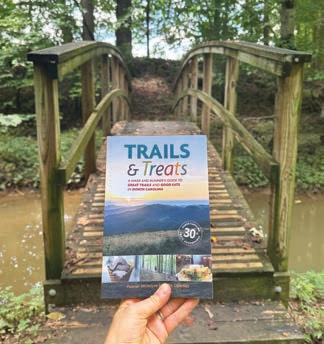
If you’re a runner, hiker, cyclist or leisurely walker, there’s a vast array of trails to explore in these many regions, from Murphy to Manteo.
And, lucky for us, Palmer McIntyre and Hollis Oberlies, two outdoor enthusiasts from Greensboro, have compiled a guide to 30 of these places and scouted out nearby spots for refueling in Trails & Treats: A Hiker And Runner’s Guide To Great Trails And Good Eats in North Carolina.
“Trails of all kinds, whether tucked into the edge of the woods in a neighborhood park, up steep mountain summits, or circling a quiet, secluded pond, provide an escape from the everyday and connect us to the beauty of the natural world,” the pair write in the introduction to the book published this year. “A little fresh air and exercise in a serene setting can be the perfect respite from our busy lives and a way to refresh our minds.”
The women, who first bonded as their daughters became “fast friends in elementary school,” have hiked and biked many miles together over the years. They’ve done a 50-mile backpacking trip on the Appalachian Trail, the 40-mile bike tour through the five boroughs of New York and the Register’s Annual Great Bicycle Ride Across Iowa, a weeklong, 500-mile event.
In 2021, they started talking about working together to produce a guide that combined two of their passions — their “love of outdoor adventures and rewarding treats.”
Neither had ever thought about writing and publishing a book, they said in the acknowledgements of their guide. Oberlies, a runner since she was a child, owns and operates a graphic design business, and could bring that skill and expertise to the project. McIntyre, who’s worked with the Piedmont Land Conservancy since 1996 and been actively involved in saving natural areas in the Triad, could share her wealth of knowledge about trails and the trail networks she advocates for.
The two set out to explore both new trails and old favorites.
The result is an easy-to-use and fun-to-peruse book full of potential adventures. McIntyre and Oberlies have helpfully divided their 30 trail picks into four areas — the Mountain, Triad, Triangle and Charlotte regions. They’ve included the mileage for each trail leg or loop, the degree of difficulty and bits of geological or historical significance that will make a visit all the more meaningful. As a bonus, they provide words of inspiration and wisdom from some of the world’s great thinkers to ponder as you lace up your shoes before you get going or while you unlace them after a satisfying jaunt.
Take, for example, the words from noted author and neuroscientist Abhijit Naskar that lead off their take on the Laurel Bluff Trail, one of Greensboro’s Watershed Trails that extends above the southern shoreline of Lake Townsend between Lake Brandt Marina and North Church Street.
“The path reveals itself once you start walking.”
What McIntyre and Oberlies reveal is that there are short steep sections of this single-track path that are challenging, while the overall 7-mile trip out and back is still suitable for children with beckoning opportunities to get close to the water. If you’re a runner, they say there’s almost always a tree canopy overhead providing sought-after shade in the hot summer months as you test your mettle on rocky and root-strewn areas that can trip up the inattentive.
If you didn’t pack trail snacks from the recipes sprinkled throughout the book (or even if you did and depleted your




omnivorous reader

stash while on the loop), the trail guide suggests a stop at Giacomo’s Italian Market on New Garden Road for cleverly named sandwiches and other “fresh, high-quality, Italian foods.” For those with a sweet tooth, there’s also Maxie B’s on Battleground Avenue, where owner Robin Davis turned her yogurt shop into a bakery that not only has an array of cakes, pies, cookies and tantalizing cupcakes. Homemade dog treats are on the menu, too. If a fruit smoothie is more to your liking, they suggest a stop at Juice Shop Smoothies on Lawndale Drive.

If you’re looking for a trail a little farther away from home or a recommendation for a post-hike adult beverage, the intrepid trail and treat guides have listed breweries and cocktail stops as well.
They’ve offered lists of gear essentials and things to watch out for in what they describe as a “unique first-time guide, written by a female hiker and runner duo.”
Kind of like you might savor the pages of a cookbook, whether you’re adept in the kitchen or not, McIntyre and Oberlies have created a guide that’s a joy to flip through.
“This guide is not for the coffee table, but meant to become a favorite companion, tucked into the side compartment of your car door, your backpack or placed on your bedside table after a day on the trails, reminding you to plan your next day out,” the duo writes. “ . . . Each path is an opportunity to explore, create memories, and renew your inner spirit.” OH
Anne Blythe has been a reporter in North Carolina for more than three decades covering city halls, higher education, the courts, crime, hurricanes, ice storms, droughts, floods, college sports, health care and many wonderful characters who make this state such an interesting place.

Curious on what you may find in our downtowns? Experience the vibrant charm of fall by strolling our downtowns and experience our small-town charm. Discover local shops, quaint bookstores, clothing boutiques and galleries featuring artisan crafts. Linger over coffee and signature local treats in one of our coffee shops, bakeries or restaurants. Get off the beaten path and stay a while.
You’ll find small surprises lead to big memories in Alamance County.

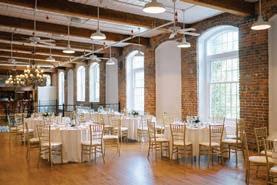








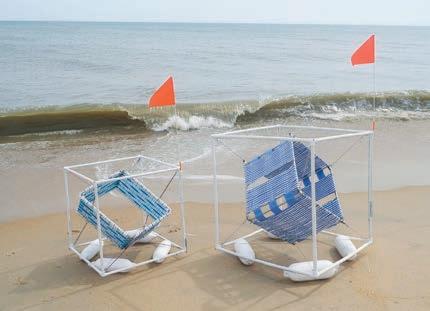

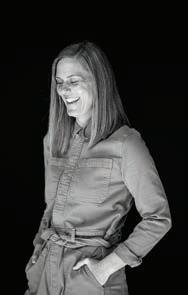
By liz A RoBeRts
Christina Lorena Weisner’s art emerges from her deep connection to the earth, to its systems and rhythms, its elements and mysteries. She studies the planet like a scientist and discovers it like an explorer, venturing to its far ends to record its extremes in person, to live within its phenomena. She turns her insights into art she hopes will inspire awe for our planet’s grandeur and empathy for its vulnerability.
Her latest fascination is the North Pole, where she spent two weeks immersing herself last spring with an expeditionary art and science residency called The Arctic Circle. “I can only describe it as the most impactful experience of my life,” Weisner says. “I’ve been interested in water for a long time, and I wanted to immerse myself into this landscape of glaciers in order to better understand it.”
The expedition’s ship, which carried 30 fellow resident artists and scientists, took Weisner and others to the Svalbard Archipelago by outboard Zodiacs twice a day, always surrounded by “a triangulation of guards with guns” to protect them against polar bears. While ashore, Weisner planted an orange safety flag in the icescape, making it a recurring motif in her photos. She also used a drone to shoot video from above and collected plastic.
“You’re in a land that you know is changing, you’re looking at a glacier that might not be there in 100 years. You’re looking at history,” she says. That history was evident in other ways, too, like a massive pile of whale bones left behind by 19th century whalers, and the detritus left behind by scientific explorers of that time. “There were many instances where I was thinking of human history as it relates to geological time,” Weisner says.
The trip “was the catalyst for a whole new body of work,” says Weisner, who is headed back next May. That work includes still photography of that mythic frontier, sweeping video and installations that incorporate pieces of plastic she collected in and around Svalbard.
Recently, her work was in Surface and Undercurrents, a group
show at Dare Arts in Manteo, and this month she is part of a group exhibit at Emerge Gallery & Art Center in Greenville. Next April she will be featured in a group show at Central Connecticut State University on climate change in the Arctic, and in June her work will be exhibited in a solo show at the Museum of Contemporary Art in Arlington, Virginia.
A native of Richmond, Virginia, Weisner says she can trace the beginnings of her work as an artist to a job she had with Nag’s Head Ocean Rescue in her early 20s. When she wasn’t saving swimmers, she stared out at the ocean for 10 hours a day. “I would watch the sun move across the sky and the moon come up,” she says. “I was very aware of these bigger processes — these large-scale movements, like waves coming over from the coast of Africa — that we’re not often aware of.”
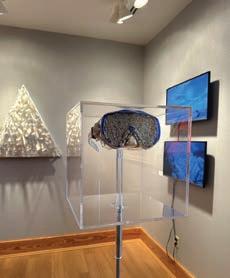
Other little-seen influences in her work come from her wideranging education, which includes an MFA from University of Texas at Austin and separate undergraduate degrees in both world studies and fine arts from Virginia Commonwealth
University. The interplay between humans, time and the planet has long been a theme in her work. As a former competitive swimmer and regular runner and biker, she experiences the world in a visceral way, creating art that is informed by the way we live within the world and the way the world lives with us.
From her home in Kitty Hawk (she’s soon to move to Duck, two Outer Banks towns away), Weisner rides a bike or runs along the beach every day to note its transformations. “It’s the same beach, but it’s completely different, the water color, the form of the waves, the temperature of the wind,” she says. Sometimes she finds objects to incorporate into sculpture as she goes.
Waves and wavelengths — audio, seismic and light — all inspire her. A meteorite impact crater in Southern Germany was the subject of sculpture and installation art she created with the Fulbright Grant she was awarded in 2013; she used seismometers to record earthquakes as part of a Mint Museum installation in 2018.


One early morning in March 2022, I had the chance to witness her in action. On the shores of Kitty Hawk Sound, I watched as she zipped up her wetsuit, assembled a series of floating sculptures, and waded with them into the frigid waters. The sun wasn’t fully up, the air was barely 40 degrees and the art she was wrangling was bigger than she was. Weisner took it all in stride. In a matter of minutes, she’d glided 50 yards from shore and her art was floating all around her.
The largest of the three pieces of art with her that morning was one she’d attached to her outrigger kayak and towed 275 miles down parts of the Eno and Neuse Rivers and through the Ocracoke Inlet in 2019, recording audiovisual information and environmental data (including a panther sighting) along the way. Two smaller works included discarded beach chairs from one of her regular oceanside jogs.
Her approach with every subject, Weisner says, is to embrace what she doesn’t know, and to let her new knowledge as well as her material guide her.
“I’m still a process-oriented artist,” she says, one focused on “openness to material and play, not taking my work too seriously . . . and not being too pigeonholed.” She thrives when she can employ all of her senses in the making of her art, especially work that involves nature. And she loves making connections across time and place.
When the polar vortex winds of 2022 washed an old canoe up on the side of the road near her house, for instance, she picked it up and brought it home. “It had beautiful layering on it,” she says. “The water had rotted holes into it. I think it had been submerged in the sound for a couple of years.”
The fact that winds from the Arctic dislodged it and brought it to her North Carolina shore fascinated her, she says, and that canoe has become part of her latest Arctic-inspired installations. “No place is an isolated place,” says Weisner. “Everything we do — everything that happens in one geographic location — impacts other geographic locations.” OH
This is an excerpt from Art of the State: Celebrating the Art of North Carolina, published by UNC Press.

OCTOBER 5-6 & 12-13
1-5 pm Admission is Free

From the comfort of your home…tour Parade houses online
www.GreensboroBuilders.org
our mobile app Greensboro Parade of Homes to map your tour! Pick up a copy of the Parade of Homes magazine at area grocery stores and Parade open houses. Access a digital copy on our website.
















My secret weapon
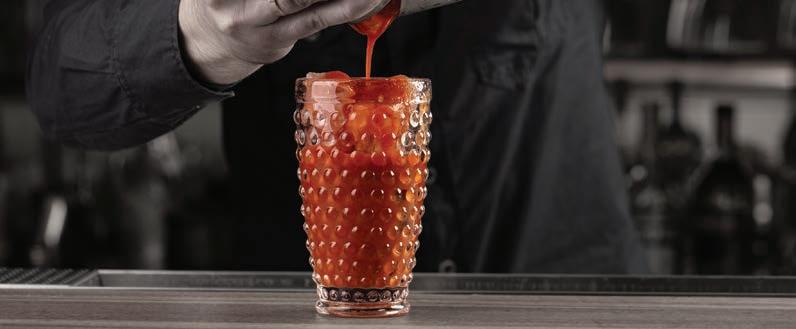
By CynthiA AdAms
WhenI gave my mother a pillow needlepointed with “Drama Queen,” she cast me a look before promptly sticking it in a closet — where it remained.
Mama always had a penchant for drama, whether emblazoned on a pillow or not. Her Katherine Hepburn-like older sister was a stark contrast. Our cool-as-a-cucumber aunt made us invariably wonder even more: Why all the drama?
Was it the advent of high-drama television when Mama was young? However exciting 1940s-era radio programs (a staple of her youth) were, televised dramatizations enacted in real time were a leap forward.
From her mother, an otherwise no-nonsense lady who knew her way around any situation (from cooking and baking for a crowd to tilling the garden and growing her own veggies), Mama had inherited a curious thing: a passionate devotion for daytime soaps.
Their very names trembled with dramatic tension: The Edge of Night, Guiding Light, The Secret Storm — Mama and her mother, Mama Patty, eagerly followed each one.
Complete fiction, they both agreed. Outlandish storylines, they assented. They even recognized that the actors were just too perfect-looking. Even so, they were totally, passionately glued to the tube, Monday–Friday, from after lunchtime (then called “dinner”) to near suppertime (now called dinner.)
These detergent-sponsored dramas unfolded along a consistent trajectory — usually as follows: a. rags to riches, b. riches to rags, or c., the most convoluted, a fall, a rise, then a fall again.
Later in life, another passion usurped Mama’s attachment to soap operas. True crime reflected many of the same dramatic ingredients.
This fascination solidified during the O.J. Simpson trial.
My mother never lost interest, from June 17, 1994, the night of the televised white Bronco chase. She watched each development thereon, and knew each and every gory detail, from the infamous glove manufacturer (Aris) to alleged assignations with a lover, to the most obscure points.
Yet I had underestimated just how invested Mama had become.
So, when I took my mother to L.A. following bypass surgery, she had clear requests. First and foremost, she wanted to drive past the Beverly Hills homes of her favorite television and movie stars. Also, she wanted to visit the infamous Simpson site. That site.
She actually knew Nicole Brown Simpson’s Brentwood address.
With great misgivings, I drove Mama to Brentwood. She practically knew the way without aid of GPS.
When I slowed near the apartments briefly and sped on, Mama insisted I turn around and pass by again, but slower this time.
Gritting my teeth and gripping the steering wheel, I was deeply conflicted and yet did as she asked — she was a cardiac patient!
Mama’s disappointment was evident. Too many things (fences, trees, pedestrians) obstructed a clear view. What did she expect anyway? A historical marker? Plus, she complained, I was still driving far too fast.
Our reactions to the scene were radically different.
She expressed how shockingly modest the apartment complex was. I pointed out this was an actual crime scene, not a stage set.
Digesting how appalling it was that a horrific landmark was now a tourist destination, we returned to the hotel at my insistence. She didn’t appreciate the irony when I later booked us on a Grave Line Tour of celebrity homes. To Mama’s mortification, the guide pulled up before our hotel driving a gray hearse, no less. (The company’s website is priceless. Its tagline, “We put death on the map,” is truth in advertising. Now, you can stipulate if you

Bridal gown care that goes above and beyond



prefer a “limousine ride through the City
But her interest in the dark side of the human psyche steadily intensified as she grew older. In the fall of 1994, when Susan Smith murdered her children in Union, S.C., Mama again absorbed every broadcast interview, each sordid detail. Had she, I ventured jokingly, harbored a secret desire to drive me and some of her
course
Mama had a paralyzing fear of water and
She even went with me to Union (along with hordes of other media folk) in pursuit of a story about the murder’s impact on a small town thrust into an intense media glare. Mama’s retention of minutiae actu-
She quickly recalled the spot where Susan and her boss had occasionally talked on record, thanks to Mama, who innocently plied him with questions, murmuring sympathetically while nursing her favorite cocktail, a Bloody Mary. (Naturally.) He winced when I pulled out a notebook, yet Mama somehow put him at ease — a feat I couldn’t have
It turned out the bartender was an old school friend of Susan’s. He shared details something he wouldn’t have done without
Recently, I could not help but think of her as the Murdaugh murders and trials unfolded, horrifying and stupefying in their
It’s a story that would have no doubt necessitated a return to South Carolina, Mama in tow, ready to ply a possible source.
Our clients trust that we’ll help them pursue tomorrow’s financial goals — whether it’s a comfortable retirement, funding a child’s education, the long-term success of your own business, or even the pleasures of travel and leisure you’ve always promised yourself.

J. Scott, CFP®, Senior Vice President/Investments; Phillip H. Joyce, Vice President/Investments; Christopher T. Barbee, CFP®, First Vice President/Investments; Jacqueline T. Wieland, AIF®, Senior Vice President/Investments; Allen Hammonds, Vice President/Investments; Paul A. Vidovich, CFP®, Branch Manager, First Vice President/Investments; Grant Gillespie, Financial Advisor; Karla D. Johnson, Financial Advisor; Chip Pegram, First Vice President/Investments, Portfolio Manager – Solutions Program; Gregory E. Gonzales, Senior Vice President/Investments





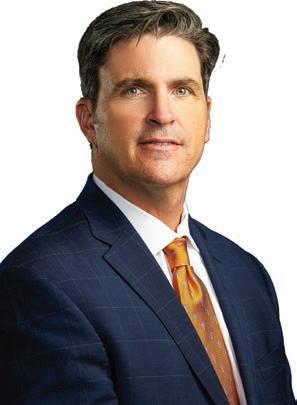
STEVE LUCEY, M.D.
By susA n CA mpBell

Keep a sharp ear out
. . . an eerie trill or spooky shriek from out of the darkness at this time of year just might indicate the presence of an eastern screechowl. Territorial adults readily use a mix of screams, tremolos with different pitches and long trills to advertise the boundaries of their home range. Their vocalizations are remarkably loud for such small birds: Screech-owls only stand about 8 inches high. They can be found in forests all over North Carolina, especially in thick pine stands — so much of our Piedmont habitat is great for them. Furthermore, they are with us year-round.
Eastern screech-owls can be either a dull gray or a rich rufous color. Dark splotches and vertical striping on the breast and belly provide excellent camouflage against tree bark, where they can be found roosting during daylight hours. Tufts of feathers on the head give an eared or horned appearance. They may be sitting close to a tree trunk or peering out of a cavity. As is the case with most raptors, females are larger than males. Nonetheless, females have higher pitched calls. Rarely are they seen, unless crows or flocks of songbirds signal their presence by frenzied flight and raucous calling.
This species is found throughout the eastern United States as well as along the Canadian border and in easternmost Mexico. Although they may wander somewhat outside of the breeding season, eastern screech-owls are not migratory. These diminutive owls breed in the springtime. Pairs, who usually stay together for life, nest in cavities, utilizing old squirrel or woodpecker holes as well as purple martin houses and wood duck boxes. Not surprisingly, pairs of screech-owls will readily take to boxes made to their
exact specifications. A female simply lays up to six white eggs on the substrate at the bottom of the cavity. Incubation takes about a month, and then the young birds take another month to develop before they fledge. During this period, while the female remains on the nest, her mate will hunt nightly for the growing family.
Eastern screech-owls eat a wide variety of prey. Rodents are a large portion of their diet, but they also readily catch frogs, large insects and other invertebrates, including crayfish and even earthworms. They have been known to feed on roosting birds and the occasional bat. Screech-owls are very much at home feeding on mice, rats or voles that can be found around bird feeders at night — as well as moths and beetles attracted to outside lights. These birds adopt a “sit-and-wait” strategy, then pounce on their prey and swallow it whole. Owl gizzards are specially adapted to digest the soft parts of the creatures they eat and then ball up the bones, fur and other indigestible bits into an oval mass that is regurgitated each day. Favored roost sites or nest cavities can be found by locating piles of these masses (or pellets, as they are referred to) on the forest floor. Unfortunately, screech-owls often hunt along roadsides and are prone to being hit by cars as they swoop low over the pavement to grab a meal.
Overall, however, eastern screech-owls are a successful species that has adapted well to the changes humans have made to the landscape. In fact, urban individuals tend to be more successful than their suburban counterparts, likely due to several factors, including fewer predators, more available prey and plenty of cavities in the landscape. So, spend some time outside after dark and train your ears for the trill or tremolos of our eastern screech-owl. No doubt there are one or two living in your neighborhood. These cute little birds are anything but scary once you get to know them. OH
Susan Campbell would love to receive your wildlife sightings and photos. She can be contacted by email at susan@ncaves.com, or by calling (910) 585-0574.

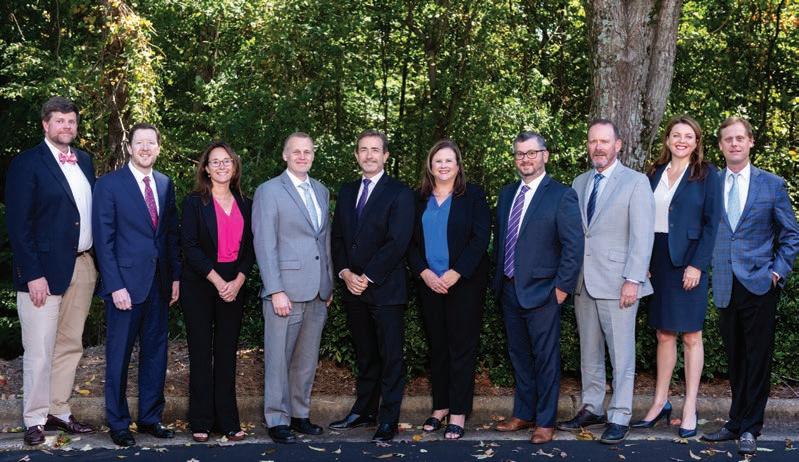

At Twin Lakes Community, it’s all about how you want to live life. Join a book club, take an exercise class, volunteer in town or tend your patio garden. You’ll find people from all walks of life and neighbors who suddenly seem like old friends. And, because Twin Lakes is a Continuing Care Retirement Community, you’ll experience the peace of mind that comes with knowing you’re at a good place in life. Maybe


"There's No Business Like Show Business, Thank God"
-Judy Garland

By Billy ingRA m
How I learned to always give credit where credit is contractually obligated
How I learned to always give credit where credit is contractually obligated
For reasons I’ll never understand, from the mid-1980s until the mid-1990s, I found myself working as an artist for Seiniger Advertising in Beverly Hills, a movie poster design team that became known as “The New York Yankees of Motion Picture Advertising.” During the last century, when movies were enjoying the industry’s most lucrative period, a lean, mean design team of about 30 of us found ourselves creating one-sheets — the movie posters you see in theaters — and trailers for the biggest blockbusters ever.
We cranked out hundreds of posters for movies such as Pretty Woman, Hook, Ghost, and Field of Dreams, and worked on films that became franchises, including James Bond, Die Hard, Lethal Weapon, Indiana Jones, Beverly Hills Cop, Star Trek and Rocky. And that’s not even mentioning every Tom Cruise, Harrison Ford, Kevin Costner and John Hughes release. They all came out of the Seiniger studio. Here are a few meaningless yet entertaining anecdotes from a time when I was Hollywood swingin’…
The Prince of Tides: Barbra Streisand was/is famous for micromanaging her projects, all the way down to creative control over
all advertising and publicity, including movie posters. For a couple of weeks after shooting wrapped, Streisand would send over suggestions for the Prince of Tides poster and I would work them up — usually consisting of a photo for the background, another for the foreground. They would arrive, about half a dozen at a time, promptly at 6 p.m. and she needed to see completed comps by 9 a.m. If at first glance I thought her choices odd, inevitably they turned out to be very attractive and astute. However, there was one particular on-set photo she liked a lot of her and co-star Nick Nolte in bed, Barbra in a nurturing position. Trouble was, she kept wanting to see her head larger, which naturally meant Nolte’s noggin got bigger. Eventually, the context was lost. That became obvious when someone passed by my desk, saw this mockup and remarked, “That looks like Barbra Streisand with her pet head!”
Boomerang: We were toiling away on a typical campaign for a romantic comedy starring Paramount Picture’s biggest star until one afternoon, when we were instructed to stop and switch directions. Seems the star decided he wanted to be the next James Bond. And, as it happened, that franchise was in limbo after License to





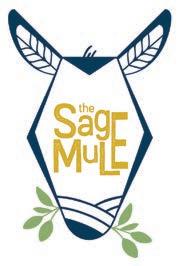

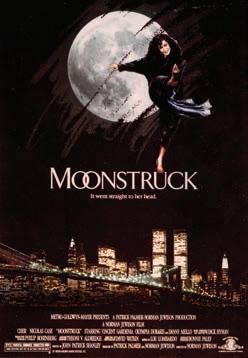
Kill bombed at the box office. From that point on, every poster design for that Paramount romcom had to make the star look as “007” as possible. Bond being another studio’s property, what could have been an unusual casting choice (to say the least) was ultimately nixed — but, if Ian Fleming’s creation had belonged to Paramount, there’s no doubt the next entry in that franchise would have starred . . . Eddie Murphy as James Bond.
Moonstruck: The image of Cher on the Moonstruck poster (from a location shoot in Central Park by Annie Leibovitz) is one that almost everyone remembers. In fact, it won what is now the Academy Award for Best Movie Poster that year, another home run for the Tony Seiniger shop. That image is actually composed from three different photos — the head, the torso and arms, and the skirt with legs all came from separate frames.
This also-ran for Moonstruck (shown) has some of the same elements as the final poster, but . . . why is Cher up in the night sky lashing out at the logo? What’s even more puzzling is why is the moon moving so dangerously close to the Earth? File this one away for Cher’s sci-fi sequel: Moonstruck the Earth!
Star Trek VI: This particular comp,
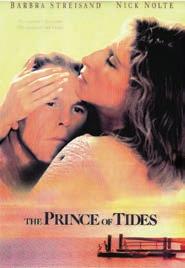

I had very little — if anything — to do with, but, whenever I drifted into a new project, I would pull the actors’ publicity contracts that we kept on file just in case. While this design by Bob Peak, a highly-acclaimed artist who rendered the illustration for the first Star Trek motion picture one-sheet, is striking and effective, I warned the art director that it would never fly. William Shatner’s contract stipulated that only Leonard Nimoy, DeForest Kelley and Shatner himself could appear on the movie poster, so this was a nonstarter.
Bugsy: One day, I noticed an older gentleman meandering around our bullpen, observing with interest how we were manipulating images, so I struck up a conversation. He was none other than George Hurrell, the photographic genius who captured indelible portraits of 1930s/1940s Tinsel Town immortals such as Garland, Harlow, Crawford, Bogart, Gable and Garbo. I was fascinated as he explained his technique of touching up those pictureperfect images directly on 8-by-10-inch negatives. This was 1991; he still had his











studio, but confessed he felt his work had been forgotten in the business, and was grateful Warren Beatty had requested a photo shoot with him for the Bugsy poster. Hurrell passed away the next year.
With all the different directions and rush-order variations requested over several months, primarily by Warren Beatty, the one-sheet for Bugsy somehow became the most expensive of all time (a record I doubt will ever be broken) — around one million dollars just for the movie poster alone. And yet, as gorgeous as George Hurrell’s stark depiction of Beatty was on the final design that both star and studio agreed on (shown fronted by Annette Bening, photographed by Bruce Weber), Bugsy’s director, Barry Levinson, was so miffed at having been left out of the process, he rejected it and demanded input. As a result, the final poster was merely a generic tango pose of the two stars lensed by a more au currant Hollywood photographer, Herb Ritts. They could have photographed it at Glamour shots in the mall.
Before working at Seiniger Advertising (a company so exclusive the phone number was unlisted), I never gave one thought to how movie posters came into being. I just fell into it. During this almost 10-year period, I actually provided the illustration for The Hunt For Red October poster and generated graphics for award-winning trailers and main titles including The Fugitive and Robin Hood: Prince of Thieves.
Glamorous? Hardly. Almost every night, we had no clue when we might be able to go home; relentless deadlines resulting in 14-, 16-, even 26-hour days were expected. Working under the most stressful conditions one can imagine for long periods of time, we formed familial bonds that extend to this day, friendships and harsh relationships that I look back fondly on — and paydays I wouldn’t mind becoming reacquainted with. OH
Billy Ingram is the author of EYE on GSO, a compendium of stories (mostly) about the Gate City’s rich history.





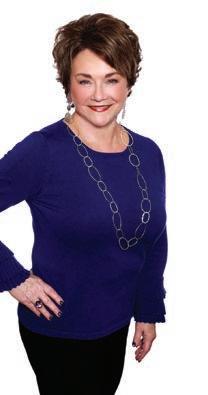










Regal in his red cap and Nehru tunic, he summons with a silver whistle, depended from a silver tassel around his neck, a taxi for Jacob, our first-born –mere minutes to make his train to Philadelphia, then another to New York, and the plane to Dubai, then Zambia. How can it be that you raise children for the world and they rush off to it, places and people you’ll never see. Is that your son, the doorman asks. When I am unable to answer, he tells me of his son, in Iraq, his fear of the telephone he can’t bear to answer.
All week, this man has held doors for me, hailed cabs, smiled as if he did not have such a son.
Joseph Bathanti was North Carolina’s Poet Laureate from 2012-14. He’s one of the five authors inducted this month into the N.C. Carolina Literary Hall of Fame.

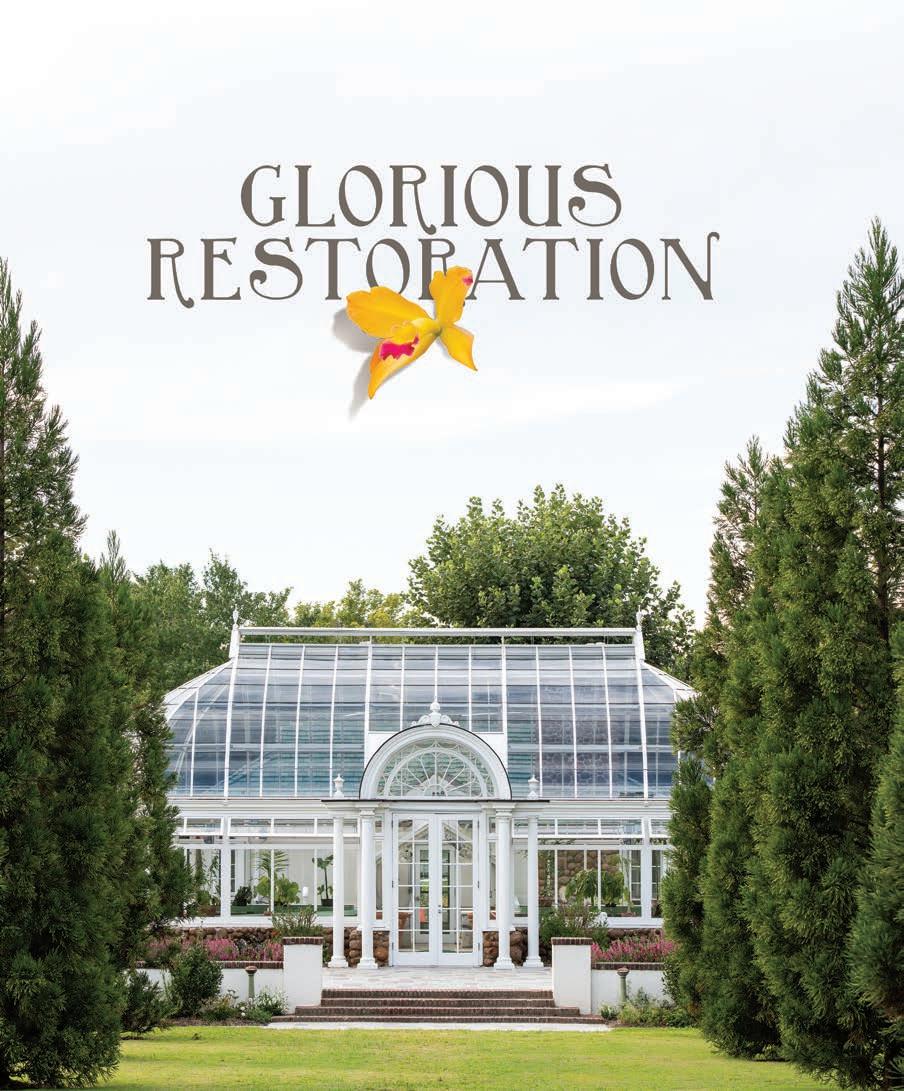
By Ross Howell JR. • PHotogR aPHs By

On a steamy August day, I’m driving along leafy Silas Creek Parkway in Winston-Salem, headed for Reynolda, the storied estate that is now part of Wake Forest University.
I’ve been invited to have a look at the top-to-bottom restoration of Reynolda’s gleaming, glass conservatory — the very first structure built on the property — before it opens to the public in October.
I turn at the entrance and pass the retail shops and eateries of Reynolda Village. Facing the parking area is a big sign that announces the impending opening of the “Brown Family Conservatory and Reynolda Welcome Center.” Just beyond the sign, I glimpse the glittering top of the structure formerly known as the palm house and greenhouse.
Work on the restoration has been going on for nearly a year, all made possible by a gift from longtime Reynolda supporters, Malcolm and Patricia Brown, who have three generations of family living in Winston-Salem.
I continue along a narrow drive, past walkers and joggers, and pull into a parking lot near the Reynolda House Museum of American Art. Completed in 1917 as the home of the R.J. Reynolds family, the museum now houses a permanent collection of three centuries of American art and sculpture, along with special rotating exhibitions and extensive online galleries.
I’m greeted at the museum entrance by Brittany Norton, director of marketing and communications. With Norton is the director of archives and library, Bari Helms. Prior to com-
ing to Reynolda, she was an archivist at the Library of Virginia in Richmond. Finally, there’s Phil Archer, deputy director of Reynolda House. A native of Pennsylvania, he attended Wake Forest University for both undergrad and grad school, and has been with Reynolda for more than 20 years.
Helms has put together some materials, so we head for the archives. There, she directs our attention to a large rendering produced by Lord and Burnham, the premier builder of glasshouses in America during the mid-19th and early 20th century.
Helms slides the rendering toward Archer.
“Have you ever seen this?” she asks. “I found it in some boxes.”
Archer shakes his head, touching a finger to the edge of the drawing.
“I don’t think so,” he says. “Not with those perpendicular wings.”
“A little too ‘Versailles’ for Katharine, isn’t it?” Archer asks. He, Helms and Norton exchange knowing smiles.
Helms shows us a letter from a certain “Katharine” to Lord and Burnham, dated May 27, 1912. In it, Katharine details what she wants the conservatory to include — a palm room, a “goodsized” grapery, a tomato section, a large vegetable section, a propagating room and a “nice workroom.”
When Lord and Burnham responded with their plans and perspectives, and their quote for $7,147, Katharine wrote back that it was too much money. The greenhouse additions in the rendering were removed.
“In all her correspondence, you get a sense of how direct, hands-on and detail-oriented Katharine was,” Helms says. I don’t want to show my ignorance by wondering aloud who Katharine is, so I let them go on.
In December 1912, Helms resumes, Katharine wrote a letter to Lord and Burnham, complaining that the workers they’d prom-

ised had not yet arrived on site. In January 1913, she wrote again, noting that parts of the conservatory were not being built to her specifications.
“Katharine was very polite about it,” Helms says. “But insisted that she was making Lord and Burnham aware of the issue so they would fix it.”
No doubt they did.
And here I am, still wondering, “Who was Katharine?”
Those of you who know Reynolda just muttered, “Well, bless his heart.”
In my two decades living in Greensboro, until my visit today, I’d been to the estate only once, bumbling around Monkee’s of the Village, a boutique, while my wife, Mary Leigh, picked out a pair of Tory Burch boots.
So, for those of you as benighted as I was, here’s a quick study.
Born in Mount Airy in 1880, Katharine Smith Reynolds was a daughter of America’s Gilded Age and a wife in the Progressive Era of the industrialized New South. In the period photographs at Reynolda, she’s the young woman in the gorgeous outfits who doesn’t seem to be looking at the camera, but, rather, directly into your soul.
To this day, her spirit and determination inform every aspect of Reynolda.
Leaving her home in Mount Airy in 1897 to attend the State Normal and Industrial School — now UNCG — she later withdrew because of a typhoid epidemic and finished her studies at Sullins College in Bristol, Virginia. In 1902, Katharine joined the R.J. Reynolds Tobacco Company in Winston-Salem, where she served as personal secretary to the owner, R.J., a distant cousin who was 30 years her senior. In 1905, Katharine and R.J. married.
Between 1906 and 1911, Katharine gave birth to four children — at grave personal risk, according to her physicians, since she had been plagued with heart problems that started in childhood.
By all accounts, the Reynolds marriage was a happy one, and R.J. was confident in his young wife’s abilities, often consulting her on business matters.
Backed by her husband’s increasing wealth, Katharine began to purchase tracts of land near Winston-Salem. She would eventually acquire more than 1,000 acres, each parcel deeded in her name alone. Her idea was a Progressive one — to create a self-sufficient estate that included a country house, a farm utilizing the latest in technology and agricultural practices, a dairy, recreational facilities and a school.
The Reynolda conservatory was an integral part of Katharine’s design.
OK, class dismissed.
Archer and I leave the archives and head outside. As we approach the conservatory, he points out details — the iron skeleton of the structure, though all the glass and aluminum fittings are new; the foundations, built from fieldstones found on the property; the locations where the electrical lines are buried, hidden, just as they were when the village was being built.
“Katherine wanted the estate to look and feel like an old English hamlet,” Archer says.
“Burying utilities was high-tech for Katharine’s time,” he adds. “But that’s what she wanted.”
At the conservatory, I’m greeted by Jon Roethling, the director of Reynolda Gardens. He joined the estate in 2018, after serving as curator of grounds for the Mariana H. Qubein Botanical Gardens at High Point University. He has served in public horticulture and landscaping for more than 30 years.
Roethling’s been leading the restoration project.
He tells me that the work has been done by Cincinnatibased Rough Brothers (pronounced rauh), now a subsidiary of Prospiant.
“Rough Brothers has access to actual Lord and Burnham plans and molds,” Roethling says.
So, for the Reynolda restoration, the company could use templates on hand, extruding aluminum pieces to match the originals.
The tinted glass needed for the restoration was made by another company. Since it’s so specialized, the company only manufactures it twice a year. That was a big setback to Roethling’s schedule and delayed completion by months.
But the wait was worth it because the unsightly aluminum shutters added to the palm house and greenhouses in a previous
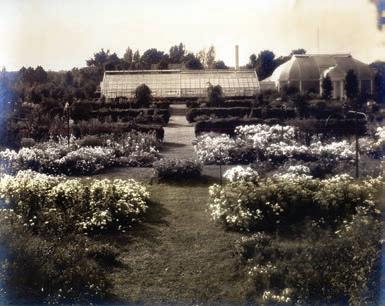

renovation could be removed. Moreover, the manufacturer had the equipment to produce curved glass. This meant that the elegant shape of the original architecture — supplanted by the use of flat glass panes in a previous renovation — could be restored.
“When I walk into the palm house now, the architecture just sings,” Roethling says.
And there were the challenges of heating and ventilation — critical to a conservatory.
“We stayed with the original concept of radiant heat,” Roethling explains, “though the new system is very sophisticated.”
Ventilation was a trickier issue, since the conservatory is vented throughout — foundations, walls and roof. From the time the conservatory was built until this restoration, these many vents had to be cranked open or shut by hand.
“You have to strike this balance of having architecture that reflects 1913, but also having the convenience and efficiency of systems that are modern-day,” Roethling says.
“Knowing Katharine, one of the most progressive women of her time, I was sure there was no way she would want us to be hand cranking vents in this day and age,” Roethling continues. “So we made the jump to automated.”
The new system automatically responds to wind flow, wind speed and precipitation, adjusting ventilation as needed. Adjustments can also be made remotely, using Wi-Fi.
Recently, when Roethling noticed a thunderstorm developing nearby, he went to the conservatory to see how the system would respond.
“As the wind rose and the storm started rolling through, I watched the vents immediately close a bit,” he says. “When the wind grew stronger, the vents shut completely, protecting the greenhouses.”
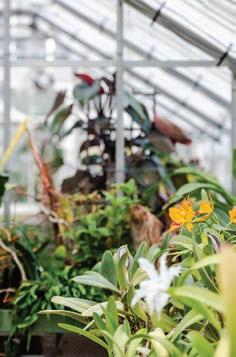

Walking outdoors to the open area in front of the conservatory, we have a full view of the central structure and greenhouses flanking it. The span, end-to-end, is more than 300 feet.
Sod has been laid the entire length. This will be a walking path for visitors. Between the edge of the sod and the foundations of the greenhouses are newly prepared planting beds, about 8 feet wide.
Roethling tells me that Reynolda has long been recognized for its peonies.
“The problem is, once the peonies bloomed out, that was pretty much it, visually,” he says.
We take a quick look at the welcome center, which is adjacent to the conservatory. It will be the orientation point for the facility. There are cabinet doors still to be hung and counters to be finished. In the future it will include plants, Reynolda-branded merchandise and historical information. Leaving the welcome center, we step into the high-ceilinged palm room. The new tinted glass is working. While the area is warm, it’s not nearly as hot as I thought it would be on this sweltering summer day.
With the restoration ongoing, Roethling wanted to do something significant about the peony beds.
“I needed someone who could do something amazing,” he says.
Roethling reached out to Jenks Farmer, a plantsman in Columbia, S.C. A published horticultural writer, Farmer served as director of Riverbanks Botanical Garden in West Columbia and was the founding horticulturist of Moore Farms Botanical Gardens in Lake City, both in South Carolina.
Farmer created a design for the peony beds incorporating other perennials that will provide visual interest throughout the growing season.
“Jenks is great,” Roethling says. “He loves balancing history with what’s relevant today. When he gets up here in a few days, we’ll lay out the beds and throw a team at them to get all the plants in the ground.”
Roethling smiles.
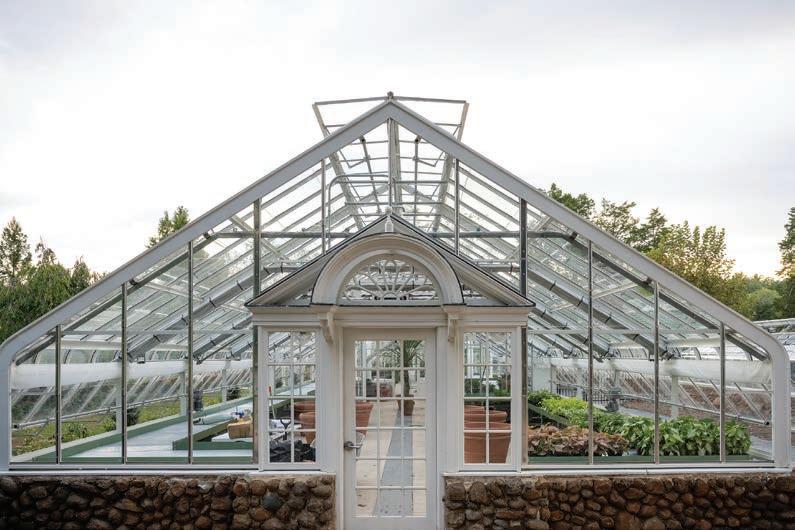
“It’s been a little bit like a three-ring circus,” he says. “I’ll breathe a sigh of relief when we open in October.”
Now he directs my attention to the conservatory.
“Each bay will have a different theme,” Roethling says. “This first bay will be in the spirit of an orangerie, which represents the birth of greenhouses.” (For the uninitiated, an “orangerie” is just what it sounds like, a greenhouse where orange trees are grown). He explains that it will be filled with citrus trees, much like the original 17th-century orangeries in England and throughout Europe. The bay will also feature olive trees and other fruiting plants and will be used to illustrate a narrative history of the development of greenhouse structures over the centuries.
The next bay will be an arid greenhouse, featuring the five Mediterranean climates of the world — Southern California, the Mediterranean Basin, South Australia, South Africa’s cape area and central Chile.
“This will be a fun thing to educate kids,” Roethling says. “To explore with them how the plant palette changes, how the plants adapt.”
The central palm house will be elegant in its features. In big containers, there will be sealing wax palms with their deep red
canes and tall Bismarck palms with their silver fronds.
“There will be a lot of texture — greens, whites and silvers,” Roethling adds. Visitors will be able to compare the broad texture of a palm frond to, say, the fine texture of a fern.
The next greenhouse bay will feature bromeliads, orchids and other flora that thrive in the tropics. And it will be about color — abundant, dramatic color. Listening to Roethling talk about this greenhouse, you hear his self-professed “plant geek” revealed.
“In here, I want to have freaky things that visitors walk up to and ask, ‘What is that?’” He smiles broadly.
The final bay will serve as a holding house for orchids that are resting. The plants will be organized by types, with interpretative signage.
“Even though the orchids won’t be in bloom there,” Roethling says, “that greenhouse will still be beautiful and educational.”
Just as Katharine would have expected. OH
Ross Howell Jr. is a contributing writer.
For more information about the attractions and events at Reynolda, visit reynolda.org.
By m aRia JoHnson • PHotogR aPHs By BeRt VandeRVeen
racious hostess that she is, my neighbor, Olivia Bonino, ushers me into her kitchen, the birthplace of many meals that she serves to guests who frequent the airy abode she shares with her younger brother, Connor.
Connor doesn’t cook much, but he does add a certain dinosaur-fueled pizzazz to the place.
Sitting at her plywood island, Olivia continues on the subject of food.
“This is where we prep it. Then they eat it. Some of it,” she says, explaining that her specialty is salad made from storebought fruit such as blueberries, blackberries and grapes, along with “cucamelon,” a small hybrid cucumber that grows in her yard, plus a “secret ingredient.”
her salads ever since.
A first-grader, Olivia saunters out of the kitchen to show off more features of her domicile, which she breezily calls a “clubhouse.” Others might call it a playhouse. Or a tree fort.
Call it what you will. It is her home away from home — like, 40 feet away from her official home — but it’s as much a refuge as any home, anywhere, at any price point.
The tour proceeds.
Here on the south side of the house, she explains, we have the climbing wall.

With that, she reaches out, grabs a branch of a scraggly plant growing at the edge of her kitchen, and pulls it closer to indicate that this is the good stuff.
“What is it?” I ask.

“Not sure,” Olivia says, adding that a guest once tasted it, and “he did not throw up or get sick,” so it has been a staple of
Here, on the north side, we have the wavy slide. She grabs a cord that dangles above the slide and demonstrates how, after descending, one might pull oneself back up the slide for another go, or, if she took a notion, rappel down the slide backward.
“That’s my favorite thing to do: walk backward,” she says.
We ascend the stairs to the second level, part the beaded curtains made from recycled ball-pit balls, and step into the 9-by-11-foot great room.
The view is stunning, taking in the emerald green outfield
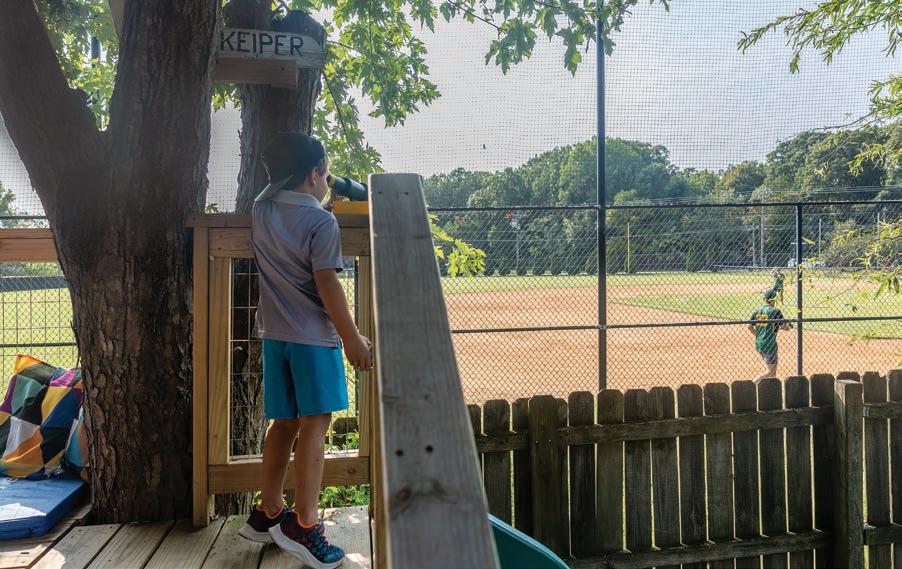
and part of the red clay infield of Greensboro Day School’s baseball diamond.
This was the home-run view that the builders — Olivia’s parents, Dominic Bonino of Greensboro’s Bonino Construction and his wife, Laura — wanted to highlight when they started making Olivia and Connor’s rustic haven in the fall of 2022, two years after moving into their home off Lake Brandt Road.
Olivia was 2 when the family relocated and Connor was not yet born, but Laura already had designs on a backyard getaway for the kids — and, occasionally, for the adults.
She was tickled to live next to a baseball field,


given her family history. Her grandfather on her father’s side, Ken Keiper, was a well-known player, coach and scout in Western Pennsylvania. He was inducted into the University of Pittsburgh-Johnstown’s sports hall of fame in 2014. Laura remembers attending games as a child.
Moving in next to a baseball field as an adult, she was excited about watching games with her own young family. A couple of years after Connor was born, she pitched her idea to Dominic.
He had a blueprint in his head. It called for a deck, lofted and braced on three corners. The fourth corner would be bolted to a mature maple tree. Floating 6 feet above ground — high enough to see over the privacy fence — the deck would feature proper stairs, doubleframed railings inset with welded wire and a gabled roof pierced by one of the maple’s limbs.
In the span of four months, mostly on fair-weather weekends, Dominic roughed in the perch. He asked his roofing subcontractor to send over a crew to shingle the gable and make it watertight around the branch. He asked several times.
“I think he was wondering if it was some kind of janky thing that wouldn’t support their weight,” says Dominic, who finally sent pictures of his craftsmanship.
“If I’m gonna do it, I’m gonna do it right,” he says. “I wanted it to be sound enough to where, if we wanted to get 10 adults up there, we could.”
Convinced, the roofer dispatched a crew. They gave the clubhouse a proper roof and used a vent boot and flashing tape to seal the hole around the tree branch, giving the maple room to sway and grow.
Soon, a wavy slide and climbing wall sprouted at the sides of the clubhouse. Laura gathered furniture and accessories, picking up pieces from family, dollar stores and the local Buy Nothing Project, an app that promotes member giveaways.
So far, her haul includes colorful handholds and footholds for the climbing wall.
Small plastic tables and chairs.
A couple of pillows that say “Relax.”
A thermometer that promises “Butterfly Kisses and Rose Petal Wishes.”
A plastic mirror salvaged from a baby’s crib.
A string of star-shaped lights, solar powered.
A dinner bell.
An eight-note xylophone for a doorbell.

A pouch-style mailbox.
A couple of John Deere license plates from her grandparents’ farm.
And a set of gymnastics mats, which Olivia, Connor and their friends pitch as an A-frame hut used chiefly for spying, Olivia says.
“By the way,” she says, nodding toward my yard. “Your bird feeder looks pretty low on food.”
When Olivia, her brother, and a constantly rising and falling tide of neighborhood kids are not spying and serving salads, they are often sitting at small tables, working on art projects.
Sometimes, their creativity spills over to the deck railings, which are decorated with rainbows, illustrated menu items and other childhood hieroglyphics rendered in crayon and colored pencil.
And, oh, they watch baseball games.
They pull for the home team, the Bengals, during their spring season.
“Ben-GALS, Ben-GALS, Ben-GALS,” the pint-sized fans chant.
Once in a rare while, if they like the opposing team’s uniforms, they’ll allow a cheer for the visitors.
But they’re a heavily partisan group. If the Bengals are down, they have been known to heckle the other side.
“Your pitcher has a big butt,” they taunt.
Occasionally, Laura and Dominic call down their charges.
But that rarely happens because of the house rules, which Olivia distills to their essence:
1. No jumping or name-calling from the platform.
2. No ratting out people who break Rule 1.
Seated in tiny Adirondack chairs approximately 4 inches off the ground— I’ll worry about how to stand up later — Olivia and I take in the extraordinary view from her living area late one summer afternoon.
Cumulus clouds climb in the distance.
Traffic swishes by on a nearby road.
A breeze sighs through the leaves, casting a filigree of shadows on the pressure treated boards before our feet.
Does Olivia wish for more in her home?
Of course.
An elevator would be nice, she says.
And refrigerator.
And a bathroom.
And a zip line.
Still, these 99 square feet —198 if you count the ground-floor kitchen — give her what she needs.
A place to rest.
A place to create.
A place to wonder.
“It’s my mini-home,” she says. OH


overed in rust, covered in scale grease — no one wants that in their home.” That’s Chris Lutzweiler describing the Industrial Age metallic mastodons he scours the country for. Lurking under the surface of this Jurassic junk is what he sees as unimaginable beauty. Hidden for decades, fallowing in forgotten warehouses or lying flat in furrowed fields, there’s an unmistakable allure that is, as he puts it, “all hiding underneath.”
Hiding in plain sight to him, yet, to the untrained eye, nothing more than the detritus of a bygone era, unwanted, dilapidated tatterdemalions transform when, conducting business as The Rustic Factory, this metallurgical magician performs his extraordinary act of restoration prestidigitation.
By Billy ingR am
Somewhere along the line, that forward thinking, backwardleaning sensibility tilted from hippie to Haut. High-end lifestyle “
surface, easily adjustable both up and down, and vertical to horizontal. In a similar vein is a commanding boardroom table, spanning approximately 14-by-14-foot with an 8-foot base, topped with a $5,000 glass surface weighing over a quarter- ton. “You can literally crank it higher or lower with just one hand.”
Fashioning furniture from outmoded heavy machinery was a shabby — not- so-chic — concept embraced in the 1960s and ’70s, when lofts carved out of shuttered manufacturing plants were leased to bohemian artists and musician-types. These creative free spirits mounted tabletops over abandoned hulking monstrosities that weighed hundreds or thousands of pounds and were forevermore bolted into hardwood floors, thereby rendering the intractable practical.
A heavy-duty table saw dated 1930 has been converted into an impressive 30-by-50-inch drafting table featuring a new glass

purveyors like RHA and Restoration Hardware began marketing vaguely reminiscent specimens of industrial-looking home and office furnishings.
There are entire lines of steampunk-inspired executive desks and home furnishings scattered about the marketplace today, pleasing enough to the eye. But these too-cleverly designed pieces betray an overly-labored approach at approximating some fictitious exactness, so overwrought that any minor adjustment requires motorization. Mere superficial “reproductions,” they lack any genuineness or authenticity that made the genre appealing to begin with. Researching this stylistic phenomenon, Chris Lutzweiler realized that most of these ersatz thingamabobs-cumhousehold-accoutrements actually originate overseas. “I still loved the look,” he insists, “but I wondered what inspired that style? Where’s the real deal?” What he discovered is that those real deals “are egregiously expensive, shockingly so, and incredibly difficult to source.”
Born in Chaska, Minnesota, but raised in Greensboro, Lutzweiler never envisioned pursuing a career crafting one-of-akind furniture from sidelined tool-and-die contraptions resurrected from the turn of the last century. And yet, the attraction came naturally. “I’ve always been fascinated by the mechanical nature
of machines,” he explains. “Any kind of machinery, any kind of engine, moving parts, anything like that.”
After about a year with little clue as to what he was actually doing, he says, “I spent a small fortune, but got started with a couple of authentic pieces.” Lutzweiler began retooling and simplifying complex machinery that could be employed as resolute office desks, dining room tables and the like from discarded dinosaurs of the industrial age.
No matter the source material, this is a labor-intensive undertaking. “There are people that like this style but can’t really go for the authentic thing because there’s a cost to it,” Lutzweiler says. “It’s not cheap, but a lot of people who reach out to me want the real thing.”
The first step is bathing any moving mechanical parts in a strong, penetrating oil — hardware, bolts, pulleys or anything else that will need to be extracted.
After allowing the oil to penetrate over several days, the original piece is carefully and painstakingly disassembled and cataloged for reassembly. “At this point, larger components are glass blasted with heavy industrial equipment outside of my facility,” Lutzweiler explains. “Smaller and more manageable components are done myself by hand.” After a century’s worth of rust, paint,
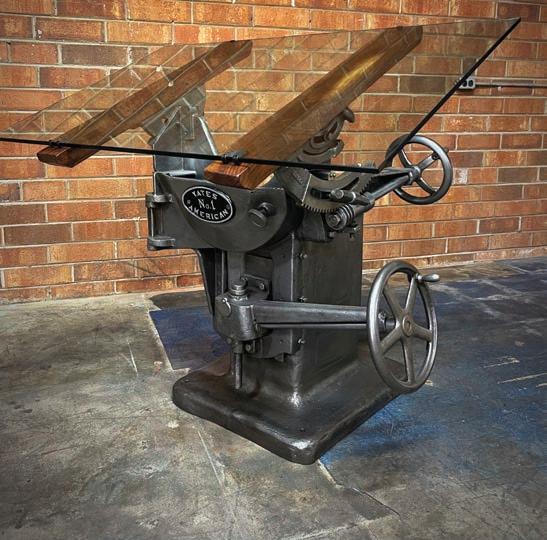
scales, grease, and dirt are eradicated, only the cast iron or underlying steel remains. “This is a critical time as bare iron or steel will actually ‘flash rust’ within minutes.” The next step is mission critical, Lutzweiler insists, and if not performed immediately, the time- consuming blasting process will have to be repeated. “Freshly blasted metal is usually a dull gray or white, and full of residue and salts,” so removing that corrosive patina and achieving a desired, cast iron finish requires hours of high-speed polishing and wire brushing. “This is the longest and most intense portion of the process that brings out the beautiful, natural color of the metal.”
The clock begins ticking again, buffed metal needs sealing as quickly as possible before any rust can form. “Each individual component is sprayed with clear coating, then the entire piece reassembled and clear-coated again several times over, ensuring that natural finish is protected.” Lutzweiler once spent an entire workday preserving a single fastener: “Nearly eight hours to save the original bolt, where a new one would have sufficed. However, the customer wanted it as original as possible.”
When it comes to maintaining the structural and periodperfect integrity of these armored antiquities, Lutzweiler occasionally needs a capability beyond his capacity. With those unusually hard cases, he has turned to Scott Cain at GFC Machine in High Point, an automotive machine shop specializing in race car chassis construction, repairs and custom fabrication.
Cain recalls when this wannabe furnituremaker (prior to Lutzweiler even entertaining such a thought) first entered his shop: “It was years ago, when he was at GTCC’s automotive program.” For college credits while still in high school, Lutzweiler attended GTCC’s middle college, where, one afternoon, an instructor guided students through GFC’s workplace, offering some insight into what machine shops are capable of.
“I’m going to say, maybe five years ago, Chris started coming here to get me to do little odds and ends for him,” Cain recalls. Those “little odds and ends” often entailed work-arounds that would likely stretch the capabilities of the most accomplished machinist. “His stuff is extremely old and just a little problematic to get what he wants done with it, to get pieces to break loose without damaging the parts.”
“Scott is a great guy — he shakes his head every time I come in the door,” Lutzweiler remarks with a grin. “I have to give him a lot of credit
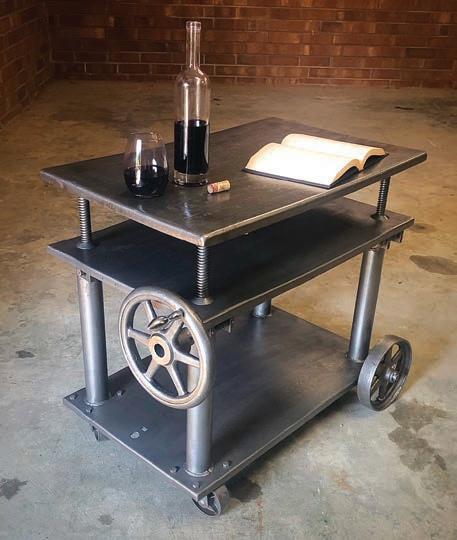

because the man is a genius with anything metal and I want things to be authentic. If that’s how it was originally done, I want to do it that way; I don’t want to improvise. And he just wants to shake me sometimes.” It’s a fortuitous match.
“Any time there is a customerfacing welding spot, I’ll ask Scott to do ‘NASCAR-style’ welds that are cleaner and more rhythmic,” says Lutzweiler.
“Honestly, it’s all in a day’s work,” is Cain’s response. Recalling a particularly complex collaboration, he adds, “One of his tables had a set of gears that had four individual Acme thread posts that would elevate the tabletop. Yeah, that one was difficult. When it worked right, it kinda made me feel good because it was such a challenge.”
That particular item, a Portelvator adjustable hand-crank cart made by The Hamilton Tool Co. circa 1890–1930, was sitting, nonfunctional, in the lobby of a high-end fitness studio in Detroit, presently enjoying new life as a deceptively simple bar cart. “What made the whole thing tricky was every component had to be precisely in sync or the gears would lock up,” Lutzweiler explains, down to the threaded rods, sun gears, worm gears, pins and chains.
Lutzweiler’s venture has him traversing across East Coast byways, exploring the Rust Belt’s every loop, in pursuit of technologically primitive behemoths originally manufactured for carving out cabinets, window frames, dining room tables and the like; those machines that once made
the furniture, in turn, will become furnishings. “Ohio and Pennsylvania are a treasure trove of authentic turnof-the-century pieces.”
Of particular interest, many of the most desirable mechanical manifestations of Industrial Revolution ingenuity were forged right here in Greensboro. Lutzweiler describes one of those transformations as “a Wysong & Miles crank table for a molding sander that can now be a dining room table or an office desk.
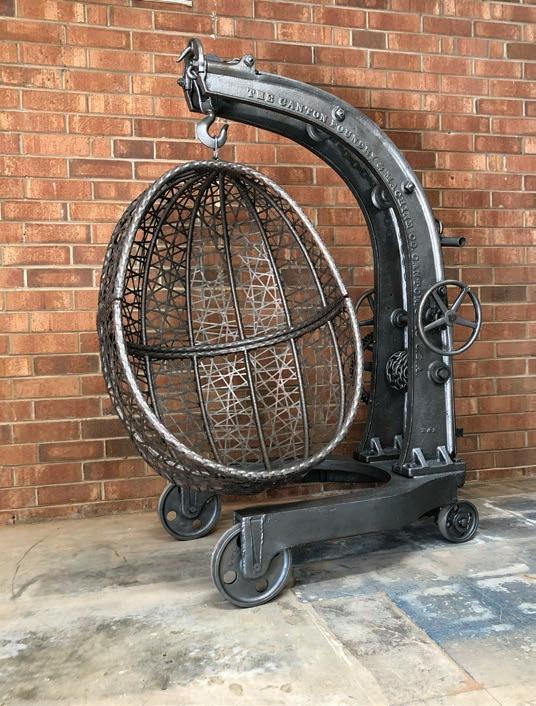

You can turn the hand wheel and it will raise and lower.”
Augmented with a glass top weighing in at 300 pounds, “you can adjust it with two fingers, it’s so smooth. It even says ‘Greensboro, North Carolina’ right there on it.” Wysong (sans Miles) has significantly downsized, but is still doing business locally.
A hefty Wysong & Miles Co. belt sander currently serves as the base for an executive desk, where floor-level hand-wheels turn with incredible ease to lift the 150-pound glass top effortlessly. “I actually polished each individual chain link by hand,” says Lutzweiler. While he can’t be sure of the exact date, he notes, “the machine had a patent number on it dating to 1896.”

In most cases the fossilized relics he’s uncovering were one-offs, built at great expense to specifications for specialized tasks. Inevitably, they ended up discarded by the companies that utilized them after an ignominious descent into uselessness, shoved into cobwebbed corners or piled outside into junk-heaped islands of misfit toys. Take, for example, a Pennsylvania casket factory crank table Lutzweiler unearthed. “It had been sitting there since it was purchased, according to the fourth-generation owner; they’d never used it in his lifetime.”
Although these aging bulls no longer emit whatever pitch they once played — one can imagine cacophonies of sense-dulling grinding, scraping, jangling — in silent repose, they elicit an instantly recognizable, weighty vibe. Native to hardwood floors, these pillars of grand austerity can’t help but add momentously to the vocabulary of any room, in particular lending an unmistakable sense of architectural symmetry when situated in an equally distinctive environment.
A celebration of hardware pre-software, there’s timeless beauty in a hanging throne, fit for royalty, improbably adapted out of a rusting artifact resembling something rightfully left behind on Skull Island. These theatric lounge chairs are constructed around pre-World War II engine cranes and elephantine factory winches once used to maneuver heavy equipment. “You can literally sit in there, take a nap, read a book, fall asleep, watch TV,” Lutzweiler says. And they’ve proved popular.
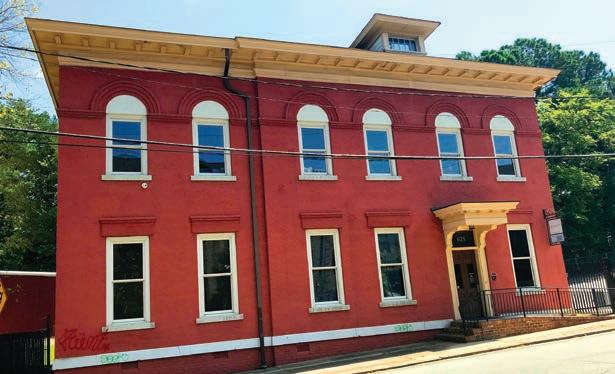
Although his company has a web site (therusticfactory.com), if mid-century Mad Men taught us anything, it’s that word-of-mouth advertising is the only sure-fire campaign — can’t fake that. “Clients will have somebody over for dinner,” Lutzweiler points out, “and somebody will say, ‘I want that for my boardroom, or a beach house — where do I get a table like this?’ And they’ll put them in contact with me.” Repeat business is something he’s become accustomed to. One gentleman, who’d previously acquired creations from The Rustic Factory, “asked if I could repurpose the wooden trusses of a vintage pre-World War I airplane into a chandelier with wings on either side. It’s all wood and completely encased in glass with run lights throughout it. This thing is probably 30 feet long.” Lutzweiler explains, “The wing lowers when he wants more light, raises when he wants it to spread out more, and it’s just a few turns of a handle. It was such a massive project, GTCC’s aviation program was kind
In 1899, Wysong & Miles Co. was organized to manufacture custom-made woodworking machinery for creating a variety of furniture and everyday items, despite warnings from New Englanders that “The South has no mechanics and cannot train them; besides, Northerners would never buy machinery made in the South.”
O.C. Wysong and G.H. Miles took no heed of this, reasoning that Greensboro would be an ideal location for such a venture. Operating on a small scale at first, orders began arriving by personal calls, telegrams and telegraph messages primarily from — wouldn’t you know? — those misguided carpetbaggers up north. Before long, Wysong & Miles dovetailers, mortisers and sanders were being shipped all across the globe before the enterprise pivoted into sheet metal-working machinery in the
enough to let me use their facilities to assemble it.” For the same client, Lutzweiler painstakingly restored then assembled four Lineberry carts sourced locally from North Wilkesboro — and “usually fairly gross” to begin with — into a train to fabricate a TV stand. “It goes in a long, long pattern and it’s got a handle at the end. What I love about this is, it’s so ridiculously heavy — egregiously heavy — but we figured out how to make it so anyone can move them.” That handle consists of a pivot with a pin. “You just pick it up with literally two fingers and you’re moving a thousand pound train. It’s insane how effortlessly these things move.” Typically in that instance, artisans will take the existing wooden top, sand it down then scuff it up a bit. “However, I don’t want to do what everybody else does. I actually installed black walnut to achieve a book-match effect.” As much as Chris Lutzweiler is in the groove right now, there’s an inherent finality to the direction his life has taken. “These are depleting assets,” he says. “There’s only so many of them left.” It’s become something akin to a treasure hunt, rooting out what few oxidizing dinosaurs may be remaining, yet to be revealed. “People that know what these are in the industry, they all go for them at once, and it’s who can get there first and fastest. Sad part is, eventually I’ll have to change business models or do something different, which is fine — when the authentic pieces do dry up.”
1940s, becoming the South’s first machine tool builder.
Wysong & Miles’ headquarters still stands at 625 Fulton St. (at Gate City Boulevard), where, by the 1950s, more inventions and patents had been taken out, and practical machines marketed, than every woodworking company in the United States combined. Their techno-centric craftsmen became renowned for custom made sheet-metal stampers and molders utilized by others for manufacturing components integrated into automobiles, airplanes, Pullman cars, refrigerators and other home appliances.
125 years later, and sans Miles, Wysong’s 104,000-squarefoot facility, located on U.S. 29 is, after Cone Mills, the second oldest manufacturing concern in Greensboro, still producing American-made machinery, shears and hydraulic press brakes known for their near-indestructibility. OH
By Cassie Bustamante
PHotogR a PHs By a my FR eeman
When it comes to communicating exactly what she wants, longtime pal Erica Worth hasn’t been the easiest client interior designer Kara Cox has worked with. For instance, when it came to the design of the Figure Eight family beach house, Erica simply told her, “I want the house to look like linen feels.”
Erica straightens up in her seat and tosses her friend a side-eye, the corners of her mouth turning up: “I wanna make Kara work for her money.”
Kara continues to needle her friend, whose Irving Park house project the two have just wrapped up. The inspiration this time around? Erica presented Kara with one solitary item: a throw blanket she’d brought home from Ireland.
“Seriously?” Kara recalls saying. “A throw — that’s it?”
Her order was simple: “Make it look good in every room.” The wool plaid throw — in shades of plum, tan, gray and green — currently rests on the back of their family room sectional, just visible as you enter through the home’s front door.
The door itself is a work of art, expressly designed with a circular space intended for a large-scale, brass lion-head knocker reminiscent of Narnia, original to the 1996 home. “A labor of love,” according to Erica, it’s a custom-built, glass-paneled beauty that allows plenty of light to shine on the newly remodeled foyer and interiors, making it easy to see that the mission was indeed accomplished.
“In every house that I build, I try to put something that was there originally, whether it’s a light fixture or a door knocker or a piece of ironwork or something that belonged to that house,” says Erica. Serving as her own general contractor, she ended up taking the entire first floor of the two-story brick home down to the studs.
She hasn’t always been a contractor, though. In fact, Erica says, “I am fairly new in my industry,” having earned her contractor’s license in 2018 and subsequently establishing her LLC, Worth Builders. While the construction business was in her blood — her own father owned a lumber business and worked
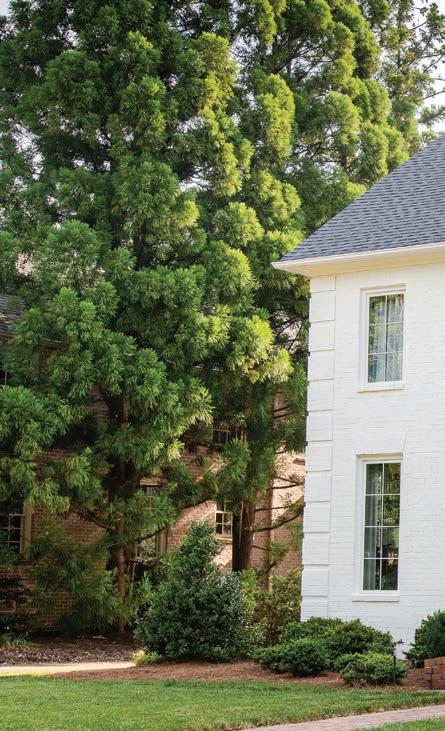
in real estate — by trade, Erica had been a practicing accountant for most of her career.
Originally from Elizabethtown, Erica moved to Greensboro in 2003 to work as an accountant for VF Corporation. Soon after, she was introduced to her husband, David, who grew up around the corner from their current home and is now CEO of Worth Industries, “a family of businesses,” including Innisbrook, Shamrock, Lewis Logistics and Capitol Medals. While the two had crossed paths at UNC-Chapel Hill, it wasn’t until they were both living in the Gate City that they really got to know one another.
“It was love at first sight,” says Erica, seated on a blue channelback chair and wearing a knee-length chambray dress, her brown hair pulled back casually in a loose bun. With a laugh, she adds, “He didn’t know it, but I did.”

Eventually, the couple married, bought a house in Kirkwood, and started a family. With little ones at home, Elsa (now 17) and Percy (now 15), Erica left her full-time job, but, in order to keep some skin in the accounting game, sought a part-time role.
Through mutual friends and activities, Erica became acquainted with Kara Cox, who had just launched Kara Cox Interiors. The two even had daughters in preschool together and their second children, both boys, were just a year apart. They each understood the demands of being working mothers.
“I was looking for a bookkeeper and part-time office manager,” says Kara. “My office was so small we could not work there at the same time!”
“I was picking up paperwork and bringing it back to my house,” adds Erica.
The business growth exceeded Kara’s expectations, who assumed she’d work part-time while raising her own children. “Then it just snowballed and it got to the point where I was like, this is getting bigger than I thought it would.” Her office would move from the closet-sized space at Revolution Mill to a larger site on Banking Street and finally to its current location on State Street.
With that rapid growth came a greater workload for Erica. “Too much,” she says. “And Kara needed more out of me.” In 2016, after working for Kara Cox interiors for five years, Erica decided to leave.
Plus, in the meantime, Erica’s family — and its needs — had grown with the birth of her last baby, Percy, now 12. In early 2014, the Worth family moved into their current Irving Park home.



While no longer employee-employer, the two women remained friends and have collaborated on a handful of projects, adding a new relationship to the mix: contractor-designer. Now, Kara says, “We don’t really remember not knowing each other.”
But that time working for Kara opened Erica’s eyes. She left knowing two things for certain: One, like Kara, she wanted to work for herself; and two, she wanted to be a part of the construction and real estate world. “If I hadn’t gone to work for Kara,” she says, “I probably wouldn’t have been as inspired.”
Newly invigorated, she began snatching up and rehabbing rental properties not far from home, maintaining a part-time schedule and working within a 2-mile radius. But she and David had always said that when their youngest, Percy, headed into second grade, it would be time for Erica to go back to full-time work. Her solution? Become a licensed contractor. That way, she could make her own hours. These days, she plans her projects to run September through May, allowing her to be flexible for her family’s needs while also making time for the things that feed her soul — tennis, yoga, the beach and her beloved mahjong matches.
Green in her industry, she called up Kathy Cross of Southern Cross Homes, a general contractor with over two decades of experience under her tool belt, and asked her to meet for coffee. They traded pleasantries, Erica recalls, “And then finally she’s like, ‘What do you want from me?’”



“I want you to be my mentor,” Erica told her. Since then, she and Kathy have partnered on projects, including some brand-new builds. “She’s been able to show me the ropes.”
Shortly after Erica earned her license, she and Kara once again entered a working relationship when the Worths hired Kara Cox Interiors to design the family beach house in Figure Eight, damaged by a hurricane and in need of a revamp.
“Erica hired a contractor who really didn’t — ,” Kara starts.“ — pan out,” Erica finishes. She hadn’t anticipated taking over the job that far away from home, but she stepped up to get it done.
“Basically, during that process, she ended up becoming the contractor,” adds Kara. And that project became their first collaboration, followed soon by an addition on Kara’s Greensboro home, a client project on Dover Road and, most recently, the Worths’ own Irving Park home.
When the Worth family moved in 10 years ago, they knew they would eventually renovate. What they didn’t know was how long they’d wait to do it. “We thought it would be in the five-year time period and then time just keeps slipping by,” says Erica. “And so here we are.”
But that wait served them well, because now Erica was able to take on the role of general contractor on her own home. And, when it came to construction, she had lots of ideas stirring around in her mind.
However, when it came to the design aspect, she knew she wanted to once again hire Kara Cox Interiors for the job from the get-go.
“I learned a lot when I worked with Kara and I just know that bringing the team together from the beginning creates the best result in the end,” says Erica. So before construction even began, she worked on the building plans, bringing Kara along at that early stage in the game.
Together, the two women picked out cabinetry, floor stains, hardware, a new marble mantel for the living room. When it came to all of the finishes, “it was collaborative,” says Kara.
“For sure,” echoes Erica.
And, together, they enjoy trying new things, challenging subcontractors to tackle projects they’ve


never before tried. “The only way to really change the trajectory of architecture and design in a city is to push the envelope a little bit,” quips Kara. Both women wanted to experiment with new ideas in this home.
Case in point? The cabinetmaker told Erica he’d never created the style of cabinetry she and Kara had selected for this project. Her response? “Good, I’m glad that you’re getting a challenge.” In the end, she says, he was thrilled with the result — streamlined, flat-front cabinetry with beveled edges lending to a classically modern aesthetic.
Were there challenges that came with working together? Of course. “We’re strong women,” says Kara. “We have opinions. I think that’s what makes us great friends. We appreciate that in each other.”
With a plan in place, the Worth family moved out in June 2023 and construction on their home began the following month. David’s brother, Jon, a bachelor, lives a couple streets over and welcomed the family into his home for the time being. Fitz and Percy lived in the main house with Jon, while Elsa stayed on the ground floor of the garage, David and Erica just above her.
While it was a little chaotic, Erica notes that their relationship with Jon grew stronger and her kids know him so much better than before. With a hint of sarcasm, she adds, “He probably misses the rowdiness.”
“He probably misses you cooking for him!” adds Kara.
“That, too,” Erica agrees.
On May 6 of this year, the Worths left their temporary quarters behind and headed for home, ready to be in their own space once again.
There’s a moment in every big project, says Kara, where the clients are exhausted and just want to be done. “They have decision fatigue, budget fatigue. They just want to get back in their house.”
She likens a renovation to childbirth “because the moment is so painful, but when it’s finished, you’re like, ‘Oh, I can’t wait to do that again!’”
Standing in the newly renovated front entry, the yearlong renovation feels well worth the disruption.
Before, you could barely even see the rest of the main floor beyond the ’90s-style foyer. And behind that? “A maze of hallways,” says Erica, resulting in an awkward flow and tight quarters. Everything felt choppy and discombobulated. To get to the kitchen, you had to walk through the dining room. And to make that happen, the dining room table had to be off center to allow for a walkthrough.
Now, the dining room features a new, warm-wood table Kara calls “modern classic” — centered, of course — surrounded by Klismos chairs. On the wall, flanking the newly installed almost floor-to-ceiling windows, drapes pick up on the purply-red tones in the Irish throw, the vibrant fabric popping off the cool green-gray walls. The pièce de résistance? Under a gold gallery light, a large landscape painting that looks like it was made for this room.

“When we did the presentation, we had all the colors and things selected,” says Kara. That day, Erica pulled out the painting, which had previously hung in David’s mother’s home. Kara couldn’t believe her eyes — it was perfect.
In the entry itself, Erica re-oriented the entire staircase, taking the foyer from two-story to one and adding a second laundry room upstairs — a huge plus for a family of five, including active, sweaty teenagers.
“We made a proper foyer and you aren’t confused about where you’re going,” says Erica. Plus, she points out three seamless doors that are practically hidden to the naked eye, wallpapered and disappearing right into the walls.
The wallpaper pattern is a simple tan-and-cream, large-scale, modern print. It took her some time to settle on that choice, she admits. “Kara was about to give up on me!”
“I was like, ‘We’ve seen every wallpaper there is!’” Kara chimes in.
In a “ta-da” manner, Erica waves her arms at the walls with a smile on her face. “Finally!”
With neutral walls, an entry rug features colors that unify the adjacent dining room and living room. “That’s all Kara,” says Erica.
The feature Erica is proudest of in the entry is a small architectural detail some may overlook — a brand new arched doorway that connects to the heart of the home. It’s a classic detail designed to give the house — not yet 30 years in age — a feeling of permanence.
“It was purposeful to make it feel older than it was,” notes Erica. Plus, she says, “I really do prefer classical architecture.”
“It didn’t feel like an old house before the renovation,” adds Kara.
As in an older home, that arched detail was carried throughout the main floor, repeated several times: in the trim on the dining room ceiling, in the family room fireplace surround, on the marble built-in bench in the en suite bathroom’s shower — off of a brand-new primary bedroom addition — and, lastly, in the tray ceiling created over the family room extension off the back.
They both pause and admire the new ceiling shape. “We’re the only people who will probably ever notice that this matches,” muses Kara.
“But I do think that women in general have a higher attention to detail than men do,” says Erica. “So when it comes to Kara being on a job site and me being on a job site, the details are in the project.”
On the far side of the addition, a built-in wet bar features light, modern cabinetry. But the standout? The aubergine-and-cream countertop and backsplash. While shopping for another client project in Charlotte, Kara spied this slab and immediately recalled Erica’s throw blanket.
“I sent her a picture of this slab and I was like, ‘Erica, this is it. This is to die for,’” recalls Kara.
Indeed, the details are in this project.
Beyond the back doors of the newly enlarged family room, the Worths added a large porch with a living space and outdoor kitchen. Eventually a patio with a grill will be added below, but, for now, the outdoor kitchen gets loads of use with its griddle, which Erica calls “a blessing.” Why? Because David loves to use it and often cooks the family dinner now.
While the interior kitchen remained where it was originally, the walls surrounding it were opened up and a larger window was installed. Surrounding the new window is a marble casing that matches the countertops. “Kara suggested that,” says Erica.
“That’s where I felt like we had a good time,” Kara adds, referring to the kitchen. Anchoring the space, a large oval island with fluted panels is topped by a dark gray-black marble. Opposite the side with stools is what Erica calls “the turkey oven,” because it’s large enough to roast the family’s Thanksgiving main course.
Another double oven is tucked away in the pantry. “Percy’s oven,” quips Erica, noting that the narrower capacity makes it perfect for baking pizza or chicken tenders. The pantry floors are classic, old-world black-and-white marble tiles. French doors inside are mirrored to create the illusion of more light and space. And on the counter reflected in those mirrored doors is the family pet, a cobalt beta, Le Bleu, named after Le Bleu water because “we own the Le Bleu distributorships around here.”
“What made you get a fish?” asks Kara.
“We’re not getting a dog,” says Erica with a laugh. Le Bleu




swims peacefully, peering out from his glass bowl. Erica leaves the pantry light on for him.
Just around the corner from the pantry is a new custom-built, channel-back banquette, ideal for cozying around the table for family meals. A fabric pendant light hangs, adding a touch of color and shapely drama over the neutral table, chairs and upholstery. Too much drama? The baby of the family, Percy, seems to thinks so.
“There needs to be a crib underneath it,” he said when his mom showed it to the family before installation.
“A what?” she asked, certain she’d misunderstood.
“A crib.”
“Well, let’s just hang it and we can change it if it’s not what y’all are feeling,” Eric replied, ending the conversation.
Standing in the kitchen now, Kara rubs her hands together. “Oh, it’s so good!”
Plus, she defends her choice: “It needs that cool pop of color.”
It seems she’s a fan of the colors in the custom-made pendant shade. The dress she’s wearing features Grecian urns and she suddenly realizes it’s as if she meant to match the house’s color scheme.
“Oh, did I?” Kara says, looking down at her frock. “That’s funny!”
“She usually does match her projects,” notes Erica.
While this project is just nearing its end after a little over a year, Kara notes that she likes to “leave room for things to evolve,” even after a client moves back into their space.
“Take it slow,” she continues. “There’s a beauty to collecting and finding the perfect little odd or end and layering that in.”
What’s next for these two? Erica would love to do a custom build with Kara, starting from the ground up. “That would be fun,” Kara agrees. And though Kara is about to celebrate 15 years in business, she admits that she’s feeling inspired by the schedule and life Erica’s built for herself. Her own two kids are close to college-age — she’ll be an empty-nester at just 48 — and she wants more flexibility, too. “I am ready to take fewer projects and have more free time,” she says.
“I may be the only person in Greensboro who doesn’t play mahjong . . . because I have to work!” Kara says.
“I can teach you,” says Erica. OH
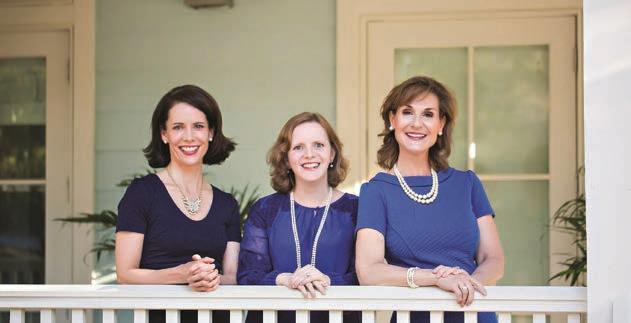
Whodunnit again? Bestselling fiction trio Beatriz Williams, Lauren Willig and Karen White, known for their 2022 New York Times-bestselling novel, The Lost Summers of Newport, are back to thrill readers with another page-turning mystery. Step inside the walls of the historic Castle Kinloch, where a literary superstar has been found dead. Agatha Christie meets Knives Out in their forthcoming novel, The Author’s Guide to Murder.
Join us to hear our three writers discuss their new novel. Tickets include heavy hors d’oeuvres and two drinks (catered by Grandover).
Sunday, November 10, 2024
2 — 4 p.m.
Grandover Resort & Spa, 1000 Club Road, Greensboro, NC 27407
Tickets: ticketmetriad.com
Supported by:


By a sHley walsHe
Can you feel them gathering? Murders of 20, 40, 60 strong, each bird like a sibyl gone mad.
“The sun is sinking, sinking, sinking,” they shriek, raspy voices harsh and urgent.
You know it’s true. The days are much too dark, too soon. And yet, right now, the sky is a cloudless blue; the maple is thick with yellow leaves; the light has washed everything golden.
Don’t let the raucous birds rip you from the moment: The warmth of sunlight on your face; the scent of wet earth; the swirl of amber leaves somersaulting through endless azure.
The crows kick it up a notch, throw back their ink-black heads, blurt their ghastly premonitions until their babble turns to laughter.
Dark and maniacal, their howling conjures a mighty wind. Do not be frightened by the glossy-winged seers. Let them rally in the shadows while the days are still honeyed. Let them pull you more fully into the luminous now.
Cock your head sideways as the crows do. Can’t you see? It’s all here — the freshness of the season; the bitter whiffs of sweet decay.
Notice that the crunch of dead leaves somehow enlivens you. “Yes, the sun is sinking,” you want to call back. “But . . . the air is alive! The leaves are turning cartwheels!”
A wild laugh rises from deep within you. The light is fading The crows are cackling. As autumn picks at her own golden thread, even the dead leaves seem to snicker.
Nothing says wholesome autumn fun like a pumpkin patch. Adorable. But if you’re looking for a pick-your-own adventure with an edge, venture to an apple orchard.
Spend a quiet hour among the trees. Study the gnarled branches. Listen for the thud of ripe fruit knocking against the sleepy earth. Dance with the shadows.

About 75 percent of our state’s apple crop is grown south of Asheville in Henderson County. Should you head west to peep and marvel at the turning leaves, consider stopping by an orchard — or farm stand — for the freshest of the fresh.
At the very least, snag a gallon of cider to-go.


I remember it as October days are always remembered, cloudless, maple-flavored, the air gold and so clean it quivers.
— Leif Enger, Peace Like a River
True leaf peepers will tell you that the best time to hit the Great Smoky Mountains or Blue Ridge Parkway for peak fall colors is the second week of October. Go a week early and be underwhelmed; a week late and you’ll miss it.
Whether or not you take the drive, the color show will surely find you — if not through leaves then through flowers. Kaleidoscopic chrysanthemums. Luminous marigolds. Tender snapdragons. Drifts of brilliant pansies.
And just watch how autumn light transforms every gorgeous hue.




















Over the last year, our team has assisted over 60 buyers and sellers in achieving their real estate dreams. We combine a "relationship-focused and results-driven" approach, ensuring that each transaction is characterized by the highest standards of concierge-level service and professionalism. Please reach out to us if we can assist you with your real estate needs.

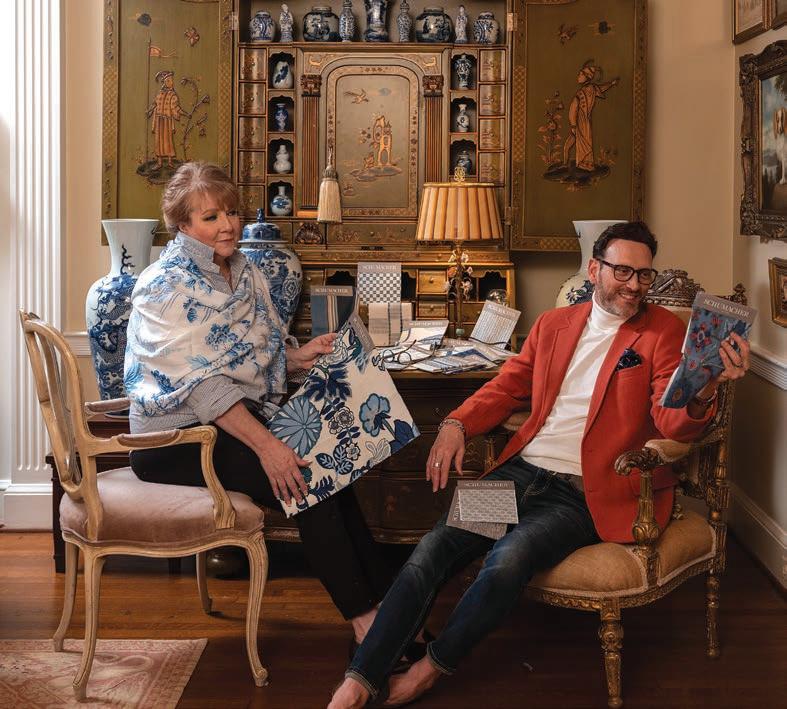








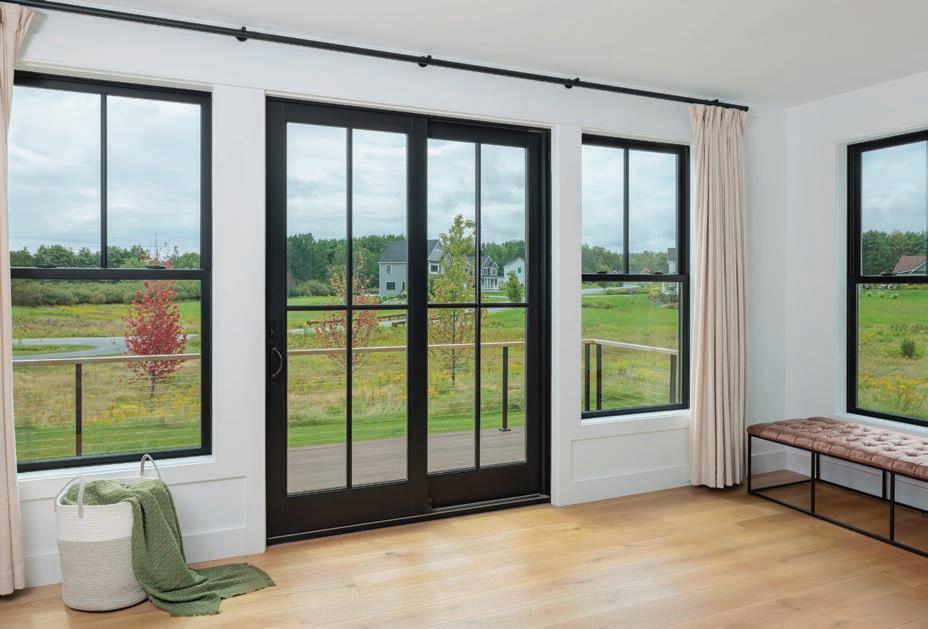


















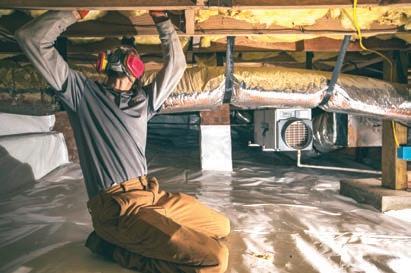
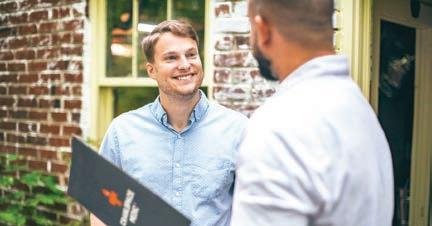



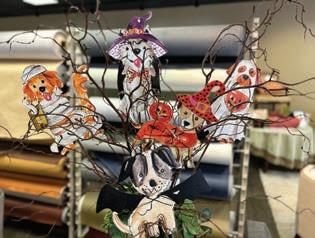



Deep sea divers know pressure... but can they handle a bidding war?









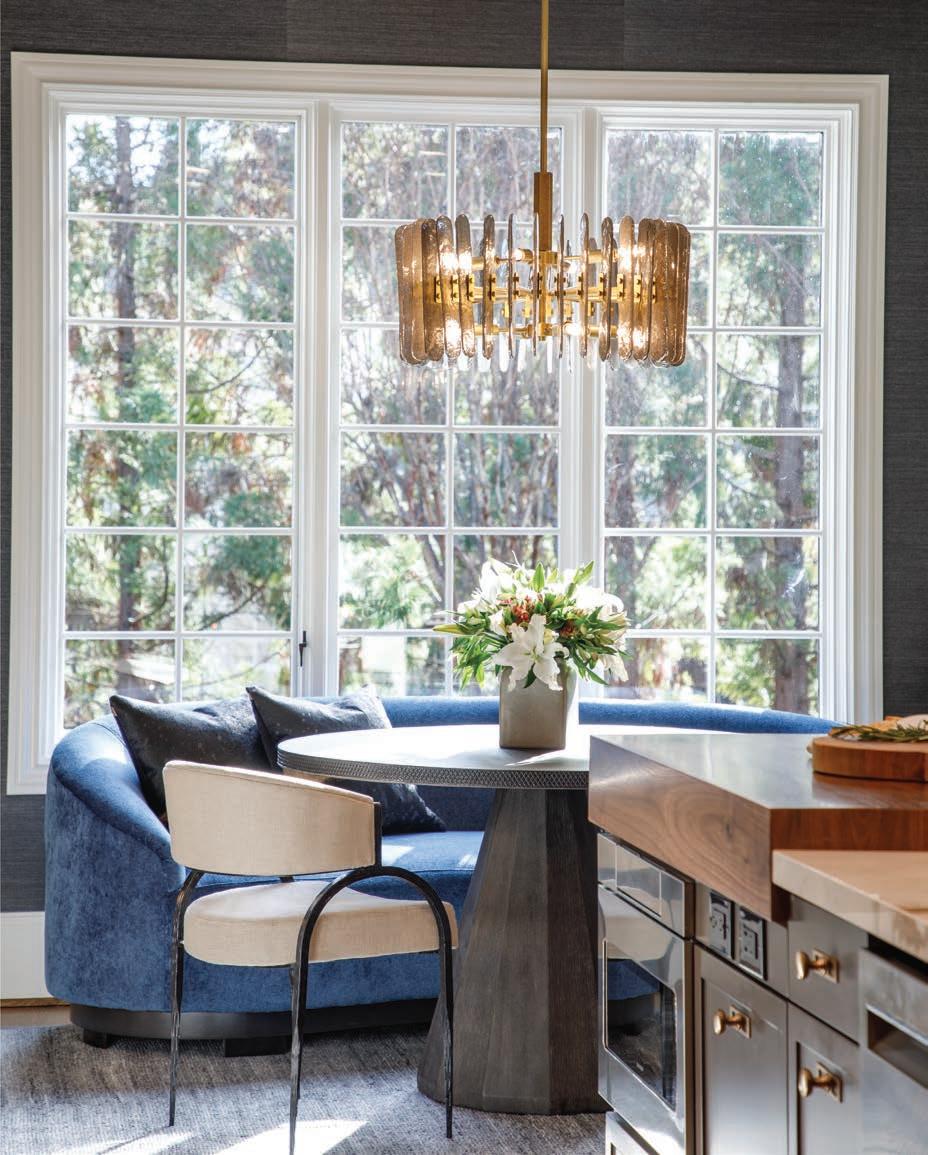










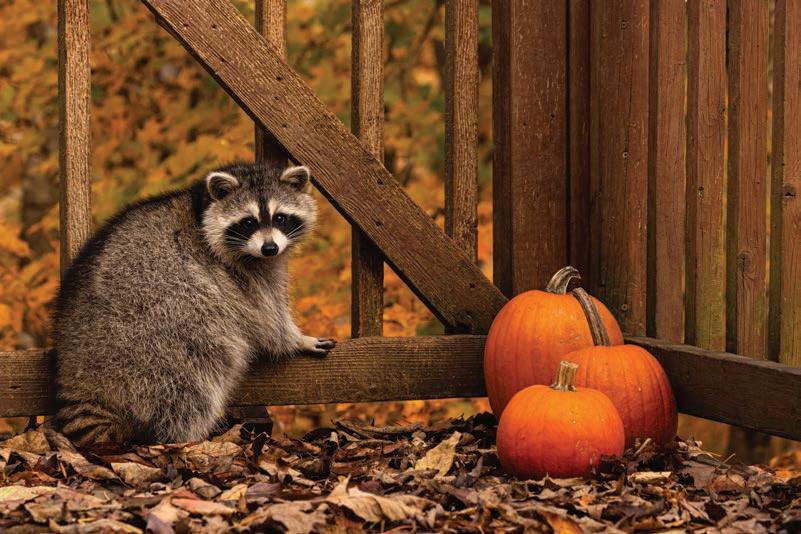













With forty-three acres bursting with vibrant foliage and a cornucopia of social, cultural and recreational opportunities, fall is a great time to cozy up to WhiteStone! Come tour our residences and amenities that keep residents happy and comfortable each and every day.
You spent years sowing the seeds for a carefree retirement. It's time to reap your rewards at WhiteStone!
Call us today at 336-652-3415 to schedule your personal appointment.
700 S. Holden Road | Greensboro, NC 27407 liveatwhitestone.org









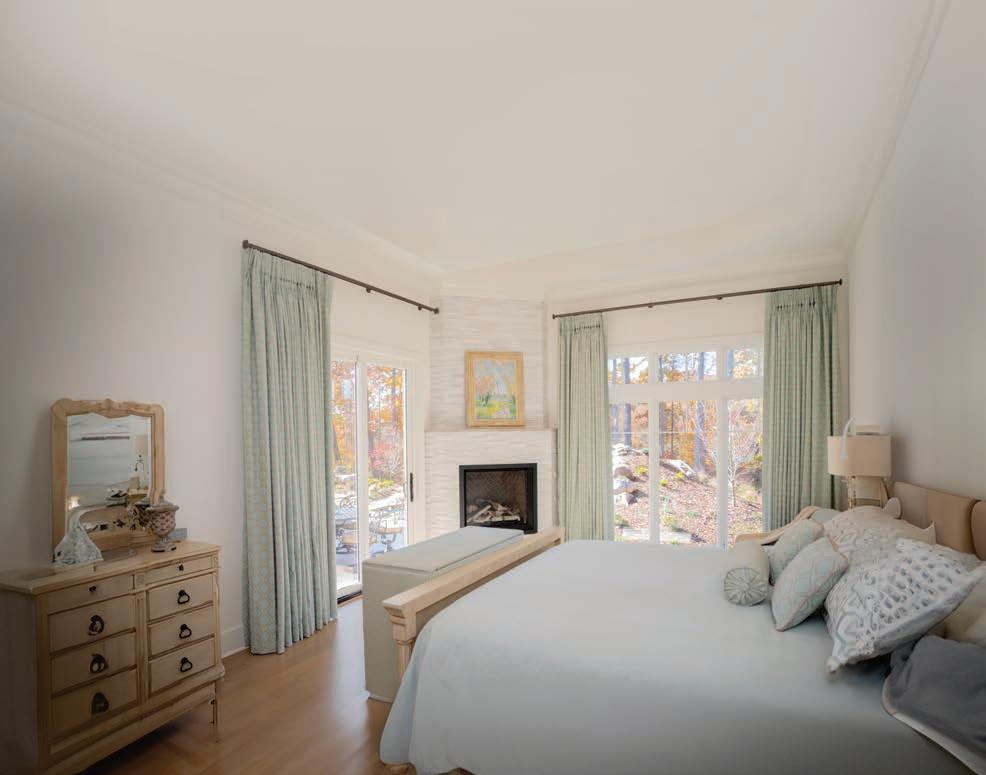






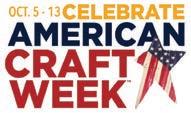


Kick off Fall 2024 by joining Seagrove Potters on the first two Saturdays in October in celebration of “American Craft Week”. Find your perfect pottery pumpkin on the Potters’ Pumpkin Patch Trail along NC Pottery Highway 705, weekends, during the month of October at participating potters. Join us for Pottery Festival Weekend in Seagrove, Saturday & Sunday, November 23rd & 24th. Admission charged or take the free Self Driving Studio Tour and explore participating potters for your own shopping adventure.


Before attending any event, it’s best to check times, costs, status and location. Although we conscientiously use the most accurate and up-to-date information, the world is subject to change and errors occur!
SUNDAYS
BARRE CLASS. 10 a.m. Strengthen, tone and stretch your way into the week. Tickets: $10. Grandover Resort & Spa, 1000 Club Road, Greensboro. Info: grandoverresort.com.
SIT, SPEAK. 4:30–5:15 p.m. Megan Blake, The Pet Lifestyle Coach, provides free group training and real time practice as you learn to connect more deeply with your four-legged, best friend. Free. LeBauer Park, 208 N. Davie St., Greensboro. Info: greensborodowntownparks. org/calendar.
TUESDAYS
PELVIC HEALTH YOGA. 8:30–9:30 a.m. This Vinyasa-style flow class works toward lengthening and strengthening the pelvic floor and surrounding muscles. Free, registration required and donations accepted. Triad Pelvic Health, 5574 Garden Village Way, Greensboro. Info: triadpelvichealth.com/classes.
FALL INTO FITNESS. 6–7 p.m. Throughout the month, sweat and flow to a variety of YMCA-led fitness classes, spaced out along various spots of the Downtown Greenway. Free. Info: downtowngreenway.org/event/ spring-into-motion-free-fitness-classes-5.
YOGA IN THE PARK. Noon–12:45. Take your lunch break with a power flow led by Greensboro Power Yoga. Free. LeBauer Park, 208 N. Davie St., Greensboro. Info: greensborodowntownparks.org/calendar.
WEDNESDAYS
LIVE MUSIC. 6–9 p.m. Evan Olson and Jessica Mashburn of AM rOdeO play covers and original music. Free. Print Works Bistro. 702 Green Valley Road, Greensboro. Info: printworksbistro.com/gallery/music.
FAMILY NIGHT. 5–7 p.m. Enjoy an art-driven evening with family and friends in the studios. Free. ArtQuest at GreenHill Center for NC Art, 200 N. Davie St., Greensboro. Info: greenhillnc. org/events.
MUSIC IN THE PARK. 6–8 p.m. Sip and snack at LeBauer Park while grooving to local and regional artists. Free. Lawn Service, 208 N.


October 4
Davie St., Greensboro. Info: greensborodowntownparks.org/calendar.
THURSDAYS
JAZZ AT THE O.HENRY. 6–9 p.m. Sip vintage craft cocktails and snack on tapas while the O.Henry Trio performs with a different jazz vocalist each week. Free. O.Henry Hotel Social Lobby, 624 Green Valley Road, Greensboro. Info: ohenryhotel.com/o-henry-jazz.
WALK THIS WAY. 6 p.m. Put on your sneakers for a 2–4 mile social stroll or jog with the Downtown Greenway Run & Walk Club, which is open to all ages and abilities. Free. LoFi Park, 500 N. Eugene St., Greensboro. Info: downtowngreenway.org/events.
EASY RIDERS. 6–8:30 p.m. All levels of cyclists are welcome to ride along on a guided 4-mile cruise around downtown. Free. Lawn Service, 208 N. Davie St, Greensboro. Info: greensborodowntownparks.org/calendar.
KIDS’ KLUB STORYTIME. 10:30–11 a.m. Yarn spinners from the Greensboro Public Library entertain little ones with stories and singalongs. Free. LeBauer Park, 208 N. Davie St, Greensboro. Info: greensborodowntownparks. org/calendar.
THURSDAYS & SATURDAYS
KARAOKE & COCKTAILS. 8 p.m. until midnight, Thursdays; 9 p.m. until midnight, Saturdays. Courtney Chandler hosts a night of sipping and singing. Free. 19 & Timber Bar
at Grandover Resort & Spa, 1000 Club Road, Greensboro. Info: grandoverresort.com.
FRIDAYS
MASTERPIECE FRIDAY. 10 a.m.–noon. Parents and caregivers are welcome to bring their kiddos to spend an enchanting morning exploring the wonders of storytelling and crafts. Registration: Non-members over 1, $8; Household Level Members, free. ArtQuest at GreenHill Center for NC Art, 200 N. Davie St., Greensboro. Info: greenhillnc.org/events.
FRIDAYS & SATURDAYS
LIVE MUSIC. 7–10 p.m. Enjoy drinks in the 1808 Lobby Bar while soaking up live music provided by local artists. Free. Grandover Resort & Spa, 1000 Club Road, Greensboro. Info: grandoverresort.com.
SATURDAYS
POTTERS’ PUMPKIN PATCH. Take a selfguided tour through five artist galleries featuring unique fall-themed ceramics along Seagrove’s Pottery Trail. Free. Seagrove, NC. Info: potterspumpkinpatch.com.
YOGA. 9:30 a.m. Don’t stay in bed when you could namaste in the spa studio. Tickets: $10. Grandover Resort & Spa, 1000 Club Road, Greensboro. Info: grandoverresort.com.
WATER AEROBICS. 10:30 a.m. Make a splash while getting a heart-pumping workout at an indoor pool. Tickets: $10. Grandover Resort &
Spa, 1000 Club Road, Greensboro. Info: grandoverresort.com.
BLACKSMITH DEMONSTRATION. 10 a.m.–4:30 p.m. Watch a costumed blacksmith in action as he crafts various iron pieces. Free. Historical Park at High Point Museum, 1859 E. Lexington Ave., High Point. Info: highpointmuseum.org.
October 1–31
THE ART OF INCLUSION. “Indelible” presents four artists who create works that embrace melancholy while offering the possibility of transcendence. Free. GreenHill Center for NC Art, 200 N. Davie St., Greensboro. Info: greenhillnc. org/exhibitions.
INTERPRETING AMERICA. A collection of photos from the archives provide commentary on life in America from the late 19th century up to the present. Free. Weatherspoon Art Museum, 500 Tate St., Greensboro. Info: weatherspoonart.org/exhibitions/current-exhibitions.
MAKING CONNECTIONS. This installation of works from the Weatherspoon’s own collection showcases the gallery as an academic museum with deep connections to its campus, Greensboro and broader communities. Free. Weatherspoon Art Museum, 500 Tate St., Greensboro. Info: weatherspoonart.org/ exhibitions/current-exhibitions.
CRIP*. This group exhibition features contemporary artists who engage with experiences and understandings of disability. Free. Weatherspoon Art Museum, 500 Tate St., Greensboro. Info: weatherspoonart.org/calendar/exhibitions/ current-exhibitions.
WATERCOLOR EXHIBITION. The Watercolor Society of North Carolina presents a juried show featuring 69 paintings by its members. Free. The Art Gallery at Congdon Yards, 400 W. English Drive, Suite 151, High Point. Info: tagart.org.
October 2
TEDDY SWIMS. 8 p.m. The artist who has recently taken the charts by storm with “Lose Control” and other hits performs with Freak Freely. Tickets: $50+. Piedmont Hall, 2409 W. Gate City Blvd., Greensboro. Info: greensborocoliseum.com/events.
READING THE WORLD. 7–8 p.m. Discover contemporary authors’ works in translation, such as this month’s selection — a sweeping, multigenerational tale blending fable, farce and fantasy — Whale by Cheon Myeong-kwan. Free. Online. Info: scuppernongbooks.com/events/calendar.
October 4–31
JAMES CELANO. After an opening reception from 4–6 p.m., Oct. 4, enjoy an exhibition by the Pennsylvania Academy of the Fine Arts graduate and Greensboro resident. Free. Ambleside Gallery, 528 S. Elm St., Greensboro. Info: amblesidearts.com.
October 4–6
MURDERED TO DEATH. Times vary. This spoof of Agatha Christie murder mysteries will leave you in stitches. Tickets: $27.49+. Centennial Station Arts Center, 121 S. Centennial St., High Point. Info: highpointtheatre.com/events.
MUCH ADO ABOUT NOTHING. Times vary. William Shakespeare’s play — the original romcom — comes to life on stage. Tickets: $25. UNCG Auditorium, 408 Tate St., Greensboro. Info: vpa.uncg.edu/events.
October 4–5
STEWART HUFF. 8 p.m. The comedian with over 15 years of eliciting laughter hits the Gate City. Tickets: $7.50+. The Idiot Box, 503 N. Greene St., Greensboro. Info: idiotboxers.com.
October 4
STORY TIME. 10–11 a.m. A member of the youth librarians team from the Greensboro Public Library engages young children through playful storytelling. Free. Woven Works Park, East Lindsay Street and North Murrow Boulevard, Greensboro. Info: downtowngreenway.org/events.
FIRST FRIDAY. 6–9 p.m. Head downtown for a night of live music and happenings stretching all the way from LeBauer Park and the Greensboro Cultural Center to the South End. Free. Downtown Greensboro. Info: downtowngreensboro.org/first-friday.
NATE JACKSON. 7 p.m. The comedic TikTok star with over 3 million followers will have you in stitches. Tickets: $39+. Steven Tanger Center, 300 N. Elm St., Greensboro. Info: tangercenter. com/events.
SHE ROCKS. 6–10:30 p.m. She ROCKS, an organization devoted to bringing awareness to ovarian cancer through outreach, hosts its Annual Dinner Event and silent auction, catered by 1618 ON Location. The Barn at Summerfield Farms, 3203 Pleasant Ridge Road, Summerfield. Tickets: $150 Info: she-rocks.org/events.
October 5–31
GLASS PUMPKIN PATCH. Take a stroll through and shop from a glimmering garden of more than 3,000 hand-blown glass gourds, pumpkins and seed pods created by Starworks artists. Free. Starworks, 100 Russell Drive, Star. Info: starworksnc.org/starworks-events.
October 5–6
BAKED CLAY & ROASTED TURKEY. 10 a.m–5 p.m. Nosh on “turkey jerky” and enjoy demonstrations while perusing the kiln opening of R.D. Mahan, honoring the potter’s father and namesake, Ronald Dewitt Mahan. Free. From the Ground Up Pottery, 172 Crestwood Road, Robbins. Info: fromthegrounduppots.com/ new-events.
October 5
MEN CAN COOK. 5:30–8:30 p.m. At this Women’s Resource Center annual fundraiser, treat your senses to dishes made by men who are famous chefs in their own kitchens. Enjoy live entertainment, bid on a silent auction, pose in a photo booth and sip small-batch wine, beer and spirits. Tickets: $50. Piedmont Hall, 1921 W. Gate City Blvd., Greensboro. Info: womenscentergso.org/men-can-cook.
GAME ON GREENSBORO. Noon–6 p.m. Card games, board games and video games abound at a family-friendly mini-convention. Tickets: $10+; kids under 5, free; pre-registration online highly encouraged. Unity in Greensboro, 501 S. Mendenhall St., Greensboro. Info: gameongreensboro.com.
GOAT YOGA. 10–11 a.m. Na- maaaa -ste with furry farm friends on the Downtown Greenway. Registration: $30. Carolyn Coleman Way and Martin Luther King Drive intersection, Greensboro. Info: downtowngreenway.org/ events.
ALEXANDER STAR. 7:30 p.m. The Emmynominated artist whose mantra is “Give hope while being dope” performs with the Golden People. Tickets: $25.35+. High Point Theatre, 220 E. Commerce Ave., High Point. Info: highpointtheatre.com/events.
KEITH SWEAT. 8 p.m. With 37 years of hits and awards under his belt, the superstar graces the Gate City with special guest Brownstone. Tickets: $65+. Steven Tanger Center, 300 N. Elm St., Greensboro. Info: tangercenter.com/events.
PATRICK ROCK BAND. 7–9:30 p.m. Warmth, soulfulness and nostalgia — that’s what you’re in for when this band performs. Free. Grapes and Grains Tavern, 2001 Yanceyville St., Greensboro. Info: grapesandgrainstavern.com.
October 6 & 13
KARAOKE & LINE DANCING. 4–7 p.m. Two of your fav activities merge for one evening of fun with DJ Energizer. Free. Center City Park, 200 N. Elm St., Greensboro. Info: greensborodowntownparks.org/calendar.
October 6 & 20
BLUEGRASS & BRUNCH. 11 a.m.–1 p.m. Enjoy live bluegrass and folk music while
munching tasty treats from vendors. Free. LeBauer Park, 200 N. Davie St., Greensboro. Info: greensborodowntownparks.org/calendar.
October 6
EN PLEIN AIR. 1–3 p.m. Local artist Darlene McClintock will lead a fall-themed creative painting class. Free; registration required. Morehead Park Trailhead, 475 Spring Garden St., Greensboro. Info: downtowngreenway.org/ events.
AILEY II. 7 p.m. “The Next Generation of Dance” marks its 50th anniversary of merging the spirit and energy of the country’s finest earlycareer dance talent with the passion and creative vision of today’s most outstanding and emerging choreographers. Tickets: $30+, Carolina Theatre, 310 S. Greene St., Greensboro. Info: carolinatheatre.com/events.
LIAM PURCELL & CANE MILL ROAD. 7:30 p.m. The band characterizes as “the future of bluegrass” twines together innovation, tradition and talent. Tickets: $15+, The Crown at the Carolina Theatre, 310 S. Greene St., Greensboro. Info: carolinatheatre.com/events.
October 7–8
GONE WITH THE WIND. 7 p.m. Well, fiddledee-dee, the classic Civil War saga returns to the big screen for two nights. Tickets: $8+, Carolina Theatre, 310 S. Greene St., Greensboro. Info: carolinatheatre.com/events.
October 8–31
COMMUNITY GALLERY SHOW. GreenHill is partnering with the North Carolina African Services Coalition (NCASC) to display works by African and refugee artists made through workshops in ArtQuest. Free. GreenHill Center for NC Art, 200 N. Davie St., Greensboro. Info: greenhillnc.org/events.
October 8–13
& JULIET. Times vary. The Broadway sensation that asks the question “What if Juliet didn’t end it all over Romeo?” rocks the stage with pop hits you know. Tickets: $33+. Steven Tanger Center, 300 N. Elm St., Greensboro. Info: tangercenter. com/events.
October 8 & 15
YOUNG ARTISTS KOLLECTIVE. 4–5:15 p.m. Provides budding artists the opportunity to exper-
iment with materials and processes. Registration: Nonmembers, $45; Members, $40.50. Oct. 8, Grades K–2; Oct. 15, Grades 3–5. ArtQuest at GreenHill Center for NC Art, 200 N. Davie St., Greensboro. Info: greenhillnc.org/events.
October 8
CAT RIDGEWAY & THE TOURISTS. 8 p.m. Known for her soulful vocals and magnetic stage presence, the singer and her band join Johnny Manchild and the Poor Bastards for The Sprinter Tour of ’24. Tickets: $15+. Flat Iron, 221 Summit Ave., Greensboro. Info: flatirongso.com/events.
October 9
GALLERY TALK. 3:30–4:45 p.m. George Dimock, professor emeritus of art at UNCG, discusses the images displayed in the Interpreting America exhibit. Free. Weatherspoon Art Museum, 500 Tate St., Greensboro. Info: weatherspoonart.org/calendar.
October 10–31
FRIGHT FLICKS. Times vary. From Scream to The Shining, watch an array of cult classic horror films this spooky season. Tickets: $8. Carolina Theatre, 310 S. Greene St., Greensboro. Info: carolinatheatre.com/events.








October 10–13
GARDEN BROS. NUCLEAR CIRCUS. Performers from all over the world create a fully immersive virtual-reality experience packed with breathtaking special effects, arena seating, concert style sound and lighting as well as aerial stunts that will blow your mind. Tickets: $21+. Greensboro Coliseum, 1921 W. Gate City Blvd., Greensboro. Info: greensborocoliseum.com/ events
October 10
JOURNALING CIRCLE. 6–7:30 p.m. Connect with a community of diarists and reflective writers. Free. Scuppernong Books, 304 S. Elm St., Greensboro. Info: scuppernongbooks.com/ events/calendar.
October 11
JAZZ MUSIC. 7–9 p.m. Bassist Matt Reid and pianist Matt Rybicki deliver an evening of smooth tunes. Free. Grapes and Grains Tavern, 2001 Yanceyville St., Greensboro. Info: grapesandgrainstavern.com.
LESSONS FOR LIFE GALA. 7 p.m. Dress in your cocktail best and enjoy heavy hors d’oeuvres, brews and live performances courtesy
of the Music Academy of North Carolina’s faculty and merit scholarship students. This gala raises funds so that the academy can increase access to music education. The Colonnade at Revolution Mill, 900 Revolution Mill Drive, Greensboro. Info: musicacademync.org/ lessons-for-life-gala.
October 12 &19
PIEDMONT MOURNING PRACTICES. 11 a.m.–4 p.m. During this spooky season, all ages are welcome to learn about the different practices and traditions of mourning from AfricanAmericans, Scots-Irish, Native Americans and Quakers in Early High Point. Free. High Point Museum, 1859 E. Lexington Ave., High Point. Info: highpointmuseum.org.
October 12
CRAFTY KIDS CLUB. 11 a.m.–1 p.m. Trained research assistants from UNCG’s DUCK Lab guide children ages 3–12 through creative endeavors that foster age-appropriate skills. Free. LeBauer Park, 208 N. Davie St., Greensboro. Info: greensborodowntownparks.org/calendar.
ADOPTABLE DOG WALK. 4–6 p.m. Walk adoptable SPCA dogs for a mile or two along the Downtown Greenway. Free, registration required.


Freedom Cornerstone, 750 Plott St., Greensboro. Info: downtowngreenway.org/events.
HERMAN’S HERMITS. 7:30 p.m. Peter Noone, the legendary singer of the ‘60s pop band, takes us back in time. Tickets: $41.36+. High Point Theatre, 220 E. Commerce Ave., High Point. Info: highpointtheatre.com/events.
ZACH RUSHING. 7 p.m. The born-and-raised Mississippi comedian takes the stage with his Taking Back the Country show. Tickets: $25+, Carolina Theatre, 310 S. Greene St., Greensboro. Info: carolinatheatre.com/events.
THE STOLEN FACES. 8:30 p.m. Celebrate the music of the Grateful Dead with this cover band that’ll have you feeling like you’ve been on a long, strange trip. Tickets: $15+. Flat Iron, 221 Summit Ave., Greensboro. Info: flatirongso. com/events.
October 13
COMMUNITY PICNIC. 4–6 p.m. Fresh air, delicious food, live entertainment and community connection — the annual Downtown Greenway Community Picnic. Carolyn Coleman Way and Martin Luther King Drive intersection, Greensboro. Info: downtowngreenway.org/events.




















PESO PLUMA. 8 p.m. The Grammy-winning Mexican artist returns to the Gate City. Tickets: $39.50+. Greensboro Coliseum, 1921 W. Gate City Blvd., Greensboro. Info: greensborocoliseum.com/events
KEN CARSON. 8 p.m. The rapper, singer and record producer from Atlanta rocks the stage. Tickets: $71+. Piedmont Hall, 2409 W. Gate City Blvd., Greensboro. Info: greensborocoliseum. com/events.
October 14 & 21
SCULPT & SWEAT. Noon–12:45 p.m. Neighborhood Barre leads a rejuvenating lunchtime class, where those of all fitness levels can seek to sculpt and refine their bodies. Free. LeBauer Park, 200 N. Davie St., Greensboro. Info: greensborodowntownparks.org/calendar.
JOHN MORELAND. 7 p.m. The folk artist who has been seen on The Late Show with Stephen Colbert and CBS This Morning graces the stage with his meditative tunes from his latest album, Birds in the Ceiling. Tickets: $20+. Flat Iron, 221 Summit Ave., Greensboro. Info: flatirongso. com/events.
October 15
ASKING ALEXANDRIA. 6:30 p.m. The British rock band hits the stage with their well-known brand of metalcore and hard rock. Tickets: $32.50+. Piedmont Hall, 2409 W. Gate City Blvd., Greensboro. Info: greensborocoliseum.com/events.
ABIGAIL DOWD’S SONGWRITING SERIES. 7:30 p.m. The local chanteuse is joined by a fellow singer-songwriter from New Orleans, Joy Clark. Tickets: $12+. Flat Iron, 221 Summit Ave., Greensboro. Info: flatirongso.com/events.
October 16
MAP BASICS. 5:30–6:30 p.m. Follow your arrow to the Downtown Greenway, where you’ll learn basic navigation skills such as compass use and map reading. Free, registration required. Freedom Cornerstone, 750 Plott St., Greensboro. Info: downtowngreenway.org/events.
COME ON DOWN. 8 p.m. The Price is Right Live invites audience members to play for prizes such as appliances, vacations and even . . . a new car! Tickets: $25.50+. Steven Tanger Center, 300 N. Elm St., Greensboro. Info: tangercenter.com/ events.
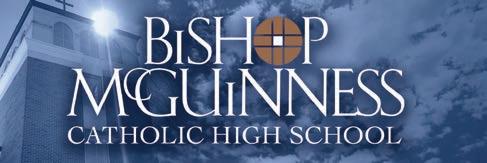


ANN BYRN. 4–6 p.m. The New York Timesbestselling author celebrates the release of her latest book, Baking in the American South Free, registration required. Well-Spring, 4100 Well Spring Drive, Greensboro. Info: greensborobound.com/event/ an-afternoon-with-anne-byrn.
THAT MEXICAN OT. 8 p.m. The MexicanAmerican rapper from Bay City, Tx., hits the stage with “Johnny Dang” and his other lively tunes. Tickets: $35. Piedmont Hall, 2409 W. Gate City Blvd., Greensboro. Info: greensborocoliseum.com/events.
October 17
OPEN MIC. 6–7:30 p.m. Writers of all genres are invited to read from their original works for five minutes at “a very cool monthly open mic” held on the third Thursday of each month. Free. Scuppernong Books, 304 S. Elm St., Greensboro. Info: scuppernongbooks.com/events/calendar.
JOE GATTO. 7 p.m. The comedian known for Impractical Jokers and The Misery Index returns to the Gate City with all new material. Tickets: $35.75+. Steven Tanger Center, 300 N. Elm St., Greensboro. Info: tangercenter.com/events.

THE GREENER SIDE. 8–10 p.m. Nick Ciacia hosts a standup comedy showcase featuring performers from all over. Tickets: $15. The Idiot Box, 503 N. Greene St., Greensboro. Info: idiotboxers.com.
October 18–19
AGGIE HOMECOMING. Times vary. Enjoy two days of concerts and performances to celebrate NC A&T State’s “Greatest Homecoming on Earth.” Tickets: $27+. Greensboro Coliseum, 1921 W. Gate City Blvd., Greensboro. Info: greensborocoliseum.com/events.
LINDSAY GLAZER. 8 p.m. The second-most famous comedian out of Peoria, Ill. — only after the legendary Sam Kinison — delivers a night of standup gold. Tickets: $15+. The Idiot Box, 503 N. Greene St., Greensboro. Info: idiotboxers.com.
October 18
PIANO MAN. 7–9 p.m. Mike Evans tickles the ivories for a night of pop music from throughout the decades that complements your spirits. Free. Grapes and Grains Tavern, 2001 Yanceyville St., Greensboro. Info: grapesandgrainstavern.com.
SW!NG OUT. 8 p.m. Acclaimed choreographer Caleb Teicher brings the best of the swing dance world to the stage, paired with live music by the Eyal Vilner Big Band. Tickets: $7.50+. UNCG Auditorium, 408 Tate St., Greensboro. Info: vpa.uncg.edu/events.
October 19–20
PAW PATROL LIVE. Times vary. Take your kids on a live musical adventure as Ryder and the pups rescue Robo Dog and show what it takes to be a hero. Tickets: $20+. Steven Tanger Center, 300 N. Elm St., Greensboro. Info: tangercenter. com/events.
October 19
KIDS’ KLUB DANCE. 11 a.m.–noon. Kids ages 3–8 are welcome to move and groove in a fun, explorative way with members of the Greensboro Ballet. Free. LeBauer Park, 208 N. Davie St., Greensboro. Info: greensborodowntownparks.org/calendar.
CAN YOU DIG IT? 1–4 p.m. Discover what archaeology can tell us about the past with. Archaeology Day demonstrations for the whole family, plus special activities for the Little Lions, pre-K to 3rd grade. Free. Greensboro History Museum, 130 Summit Ave., Greensboro. Info: greensborohistory.org/events.
NC DANCE FESTIVAL. 7:30 p.m. Enjoy a performance featuring an array of talented dancers paired with compelling choreography. Tickets: $12+. Van Dyke Performance Space at the Greensboro Cultural Center, 200 N. Davie St., Greensboro. Info: danceproject.org/ncdf.
GHOST STORIES. 6–7:30 p.m. Following




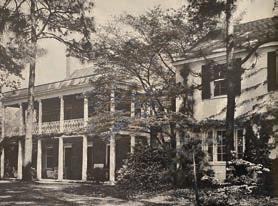
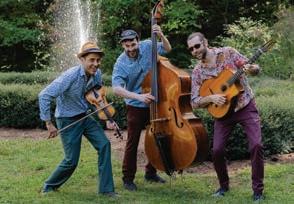


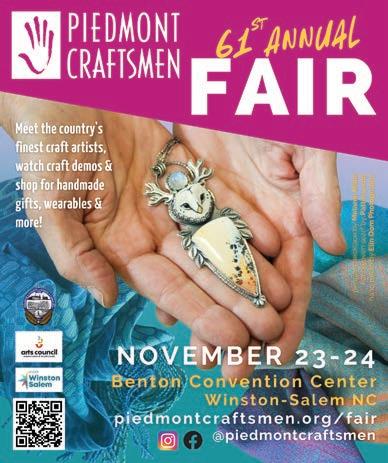



a half-hour of snacks and crafts, professional storyteller Dan Sellers of Carolina Haints will tell spooky (but not too scary) tales for the young and old. Free. Historical Park at High Point Museum, 1859 E. Lexington Ave., High Point. Info: highpointmuseum.org.
SCREENWRITERS & FILMMAKERS.
4–5:30 p.m. Movie makers unite for those interested in creating cinema-worthy work. Free. Scuppernong Books, 304 S. Elm St., Greensboro. Info: scuppernongbooks.com/ events/calendar.
KELLY SWANSON. 7:30 p.m. The awardwinning comedian, motivational speaker and storyteller hits the stage for a night of laughter and inspiration. Tickets: $25.35+. High Point Theatre, 220 E. Commerce Ave., High Point. Info: highpointtheatre.com/events.
ARAN SHETTERLY. 6–7:30 p.m. The author of Morningside: The 1979 Greensboro Massacre and the Struggle for an American City’s Soul joins Dr. Love Jones, executive director of human rights
Ave., Greensboro. Info: greensborohistory.org/ events.
GREAT TRAILS STATE DAY. To celebrate, hit the trails at one of several events happening throughout the state. Info: greattrailsnc.com/ events-calendar.
TEA CUP GIN. 7–10 p.m. Pinkies out for this indie-jazz band as they perform in a cozy speakeasy environment. Free. Grapes and Grains Tavern, 2001 Yanceyville St., Greensboro. Info: grapesandgrainstavern.com.
October 20
TOUCH-A-TRUCK. 11 a.m.–4 p.m. Dozens of exciting vehicles come together to transform a traditional parking lot into a place of exploration and discovery for children of all ages. General admission: $5, or five for $20; activity tickets: $1 or 20 for $16. Volvo Group Campus, 7900 National Service Road, Greensboro. Info: juniorleagueofgreensboro.org/touch-a-truck.
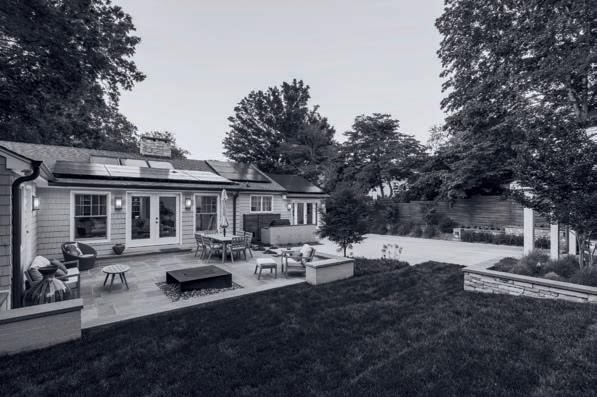
NEWBERRY & VERCH. 2 p.m. String along for an afternoon of musical harmony between a fiddle and a banjo. Tickets: $25+. The Crown at the Carolina Theatre, 310 S. Greene St., Greensboro. Info: carolinatheatre.com/events.

October 23
ARTIST TALK. 5:30–7:30 p.m. Indelible artists Elliana Esquivel, Aimée Garcia, Isabel Lu and Abir Mohsen discuss the role of inherited cultural practices in their artwork and their personal investigations of identity. Free. GreenHill Center for NC Art, 200 N. Davie St., Greensboro. Info: greenhillnc.org/events.
October 24–27.
DON GIOVANNI. TImes vary. Seduction, betrayal and murder abound in Greensboro Opera’s performance of Mozart’s legendary opera. Tickets: $45+. Gail Brower Huggins Performance Center at Greensboro College, 815 W. Market St., Greensboro. Info: greensboroopera.org/tickets.
October 24
LEVAR BURTON. 7:30 p.m. Known for playing Kunta Kinte in Roots as well as hosting Reading Rainbow, the legendary star takes the stage for a night of conversation as part of the Guilford College Bryan Series. Steven Tanger Center, 300 N. Elm St., Greensboro. Info: tangercenter.com/ events.



BRI BAGWELL. 8 p.m. The Texas Female artist of the Decade and reigning Female Artist of the Year delivers a night of country crooning with Wheelwright . Tickets: $20. Flat Iron, 221 Summit Ave., Greensboro. Info: flatirongso. com/events.
October 24, 26–27
ARTSTOCK. Thursday, 6:30–9 p.m.; Saturday & Sunday, noon–5 p.m. After a Thursday evening kickoff party featuring all ArtStock artists, spend the weekend touring — drive yourself or hop on the ArtStock Trolley — through their studios and pop-ups marked with red balloons while shopping pottery, paintings, prints and many other mediums. Free. Kickoff party at Revolution Mill’s Gallery 1250, 1250 Revolution Mill Drive, Suite 123, Greensboro. Info: artstock.com.
October 25
ROARING ’20S SPEAKEASY NIGHT. 7–10 p.m. Celebrate 100 years of the Greensboro History Museum with a swell evening of jazz, cocktails, heavy hors d’oeuvres and razzmatazz, including a scavenger hunt, games and contests that evoke the spirit of the 1920s. Tickets: $45+. Greensboro History Museum, 130 Summit Ave., Greensboro. Info: greensborohistory.org/events.

October 26
KARLA DAVIS JOHNSON. 7–9:30 p.m. As seen on The Voice, this local singer-songwriter delivers a night of soulful sounds while you sip. Free. Grapes and Grains Tavern, 2001 Yanceyville St., Greensboro. Info: grapesandgrainstavern.com.
ERIC GALES. 8 p.m. The blues firebrand with 18 albums and 30 years of music under his belt performs a soulful night of song. Tickets:


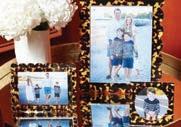

$30+. Carolina Theatre, 310 S. Greene St., Greensboro. Info: carolinatheatre.com/events.
GATE CITY BLUES FESTIVAL. 8 p.m. Enjoy a night of emotional, musical storytelling, featuring artists such as Tucka, King George and Pokey Bear. Tickets: $55+. Steven Tanger Center, 300 N. Elm St., Greensboro. Info: tangercenter. com/events.
GREENSBORO LAUGHS. 8–9:30 p.m. Live, laugh and laugh some more at this standup comedy showcase. Tickets: $6+. The Idiot Box, 503 N. Greene St., Greensboro. Info: idiotboxers.com.
October 26
UNLIVING HISTORY. 2:30–5:30 p.m. Geared towards children 12 and under, Ghoulash is an annual fall festival with costumed interpreters and Halloween-themed activities and led by the Greensboro Youth Council. Free. LeBauer Park, 200 N. Davie St., Greensboro. Info: greensborohistory.org/events.
YARN MONSTERS. 10 a.m–2 p.m. In a sensory-friendly environment, all ages are welcome to drop in and craft cute-not-creepy yarn monsters. Free. The Little Red Schoolhouse at High Point Museum, 1859 E. Lexington Ave., High Point. Info: highpointmuseum.org.






2105 W Cornwallis Drive Suite A, Greensboro, NC 27408 (corner of Cornwallis Dr and Battleground Ave)






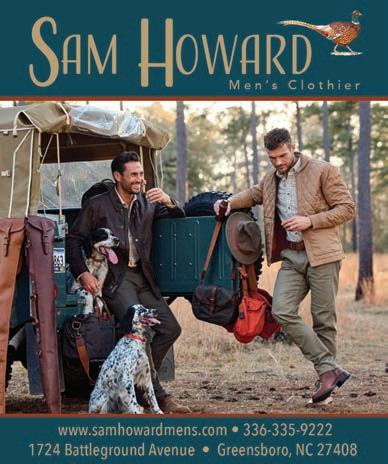
1725 NC Highway 66 South, Kernersville, NC 27284 (336) 564-1010 • www.bmhs.us
Focus: The largest private high school in the Triad. Outstanding college prep high school experience with exceptional academics, extracurricular activities and championship athletic teams. Aviation and Fine Arts programs. College Board AP Honor Roll Distinction. Full AP program with College Counseling Center. Class of 2024 awarded over 5MM in merit-based scholarships. Academic Achievement Program, transportation available. All faiths welcome.
Grades: 9-12th • Enrollment: 480 • Student/Faculty: 9/1
Admission Requirement: Admission is on a rolling basis.
Tuition: $11,996-$16,352
Caldwell Academy
2900 Horse Pen Creek Road, Greensboro, NC 27410 (336) 665-1161 • www.caldwellacademy.org
Focus: The mission of Caldwell Academy is to assist parents from a biblical perspective in the instruction of their child by providing a classical and Christian education.
Grades: Transitional Kindergarten – 12th Grade Enrollment: 538 • Student/Faculty: 15:1
Admission Requirement: We invite those interested to tour our campus to learn more about our school and community. After completing an application, academic assessments are administered, followed by student and parent interviews.
Tuition: $8,125 - $16,793 depending on grade level
5401 Lawndale Drive, Greensboro, NC 27455 (336) 288-8590 • www.greensboroday.org • gdsadmission@greensboroday.org
THE GDS EXPERIENCE
• Commitment to student safety & well-being
• Exceptional preschool program
• Rigorous and exciting academic program
• Multitude of opportunities in athletics & the arts
• Beautiful 72-acre campus
Grades: Age 2–Grade 12 • Enrollment: 995 Students
Average Class Size: 16 Students
Community Cornerstones: Respect, Kindness, Integrity, Responsibility
Admission Requirement: Admission on a rolling basis.
Tuition: $13,250–$27,970, Financial Assistance Available

804-A Winview Drive, Greensboro, NC 27410 (336) 855-5091 • www.bnai-shalom.org
The BSDS Experience: At B’nai Shalom Day School we embrace the power of being small by design, for it allows us to craft a one of a kind educational experience that is intimate, inspiring, and deeply connected to our mission.
Grades: 8wks - 8th grade
Mission: B’nai Shalom Day School inspires curiosity, critical-thinking, confidence, and a connection to Jewish values.
Admission Requirements: We invite interested families to schedule a time to meet with our Director of Admissions to learn more about our school and community! K-8 students are required to be Jewish or have attended a Jewish Preschool, though this is not a requirement for our Preschool program.
Tuition: $13,670-$22,240
5400 Old Lake Jeanette Rd, Greensboro, NC 27455 (336) 288-2007 • www.canterburygso.org
Focus: Canterbury School is the Triad’s only Episcopal day school, serving students from preschool through 8th grade. Canterbury cultivates a love of learning with an approach that educates the whole child - mind, body, and spirit. Our dedicated and experienced teaching staff develop close relationships with their students in intentionally small classes, allowing for tailored instruction to meet each child’s individual needs. In the last 20 years, 23 Canterbury graduates have been valedictorians and salutatorians of their high schools.
Grades: Cubs (age 3) - 8th grade • Enrollment: 353 • Student/Faculty: 7/1
Admission Requirement: See website for details canterburygso.org
Tuition: Cubs - PreK: $9,500 - $12,500 • Kindergarten: $20,000 • Grades 1 - 4: $22,000 • Grades 5-8: $23,500
Greensboro Montessori School
2856 Horse Pen Creek Road, Greensboro, NC 27410 (336) 668-0119 • www.gms.org
Focus: Nurturing and challenging students to develop the skills and courage they need to unleash their full potential.
Grades: 18 months old to 9th grade • Enrollment: 264
Student/Faculty: Under 3 years, 6:1; 4 years and older, 11:1
Admission Process: 1) Visit to get to know our School.
2) Apply to tell us more about your family.
3) Spend time with us through a student visit and family meeting.
Tuition: $10,774 - $22,304 (current school year)
ERIK TERREL 8–9:30 p.m. With a new special on Amazon Prime, Live at Helium Comedy Club, Terrel delivers a night of carefree and charismatic comedy. Tickets: $15. The Idiot Box, 503 N. Greene St., Greensboro. Info: idiotboxers.com.
ASL ART TOUR. 11 a.m. and Noon. Committed to access for all, the Weatherspoon Art Museum offers an ASL-guided tour of its CRIP*: Artists Engage with Disabilities exhibit. Free, registration required.. Weatherspoon Art Museum, 500 Tate St., Greensboro. Info: weatherspoonart.org/calendar.
NATURE JOURNALING. 3–5 p.m. Pack your pen or pencil plus journal and enjoy a group session of mindfulness and nature reflection. Free, registration required. Meeting Place, 801 W. Smith St., Greensboro. Info: downtowngreenway.org/events.
STREET NIGHT MARKET. 6–10 p.m. Buy local, buy used and support Black-owned businesses at the new Gate City Street Night Market on the last Saturday of each month. Free. Along the Downtown Greenway at Elm and Bragg Streets, Greensboro. Info: greensboro-nc.gov/ government/city-news/city-calendar.
HATEBREED. 7:30 p.m. The metalcore band out of Connecticut celebrates 30 years with special guests Carcass, Harms Way and Crypta. Tickets: $27.50. Piedmont Hall, 2409 W. Gate City Blvd., Greensboro. Info: greensborocoliseum.com/events.
COLLAGE. 7:30–9 p.m. Get in the spooky spirit with special lighting, haunting music and non-stop scintillating performances by UNCG School of Music students and faculty. Tickets: $8+. UNCG Auditorium, 408 Tate St., Greensboro. Info: vpa.uncg.edu/events
STRAIGHT NO CHASER. 8 p.m. Enjoy a night of “Top Shelf” hits from one of a capella’s most celebrated groups. Tickets: $35.50+. Steven Tanger Center, 300 N. Elm St., Greensboro. Info: tangercenter.com/events.
LIMITED ENGAGEMENT BAND. 7–10 p.m. This incredible cover band takes you on a musical journey through the ages. Free. Grapes and Grains Tavern, 2001 Yanceyville St., Greensboro. Info: grapesandgrainstavern.com.
LOOK UP. 6:30–9:30 p.m. WFDD invites you to a night of family-friendly spooky stories, s’mores and stars. Tickets: $25; kids 12 and under,
free. The Lake at Hanging Rock State Park, 1790 Hanging Rock Park Road, Danbury. Info: wfdd. org/lookupandlisten.
October 27
THE LIFE AND MUSIC OF GEORGE MICHAEL. 7:30 p.m. Take a musical journey through the life and hits of the pop culture icon. TIckets: $20+. Steven Tanger Center, 300 N. Elm St., Greensboro. Info: tangercenter.com/ events.
TRUNK-OR-TREAT. 5–7 p.m. Bring your little goblins and ghouls for a safe and festive trick-or-treating experience right from decorated car trunks or sign up to host a trunk. Free. Unity in Greensboro, 501 S. Mendenhall St., Greensboro. Info: unityingreensboro.org/ halloween.
October 31
CARRIE: THE MUSICAL . 7:30 p.m. Stephen King’s thriller about a teenage girl’s supernatural vengeance takes the stage, complete with song. Tickets: $30. Sprinkle Theatre, 402 Tate St., Greensboro. Info: vpa.uncg.edu/events. OH

Noble Academy
3310 Horse Pen Creek Road Greensboro, NC 27410
336.282.7044 • www.nobleknights.org
Focus: Noble Academy empowers students with learning differences to pursue their highest potential within a comprehensive, supportive educational environment.
Grades: 2 - 12 • Enrollment: 160 • Student/Faculty: 8/1
Admission Requirement: Average or above average intelligence, a dignosis of ADHD and/or a learning disability, including Central Auditory Processing Disorder and/or difficulties with one or more of the following: Attention, Processing speed or memory, Auditory processing, Executive functioning, Reading, Math, or Writing, and Academic fluency.
Tuition: $26,000 for all grades. Noble Academy can offer financial assistance to families that qualify. Noble Academy also accepts the Opportunity Scholarship and the ESA+.
1917 North Centennial Street, High Point, NC 27282 336.884.3333 • www.wcatrojans.org
Focus: Wesleyan Christian Academy is committed to shaping Christian leaders who will make a lasting impact for Christ today and in the future! In partnership with parents, Wesleyan provides a solid educational foundation rooted in biblical truth. We offer academic programs for high achievers and comprehensive support to help every student succeed. With unmatched student programming in athletics and the performing and fine arts, our graduates earn between $6.5 and $8.2 MM in merit-based scholarships yearly. Visit us and feel the difference!
Grades: TK - 12th Grade • Enrollment: 1064 • Student/Faculty: 21/1
Graduation Rate: 100%, with 90% of graduates headed to a four-year college/university
Admission Requirement: Early Application Deadline: Jan 17, 2025, but we accept applications throughout the year.
Tuition: $11,450 to $14,450
Schedule a visit or apply online at www.wcatrojans.org/admissions
Westchester Country Day School
2045 North Old Greensboro Road, High Point, NC 27265 (336) 822-4005 • www.westchestercds.org
Focus: WCDS is an independent school that cultivates responsible citizens and leaders by embracing all backgrounds and nurturing personal excellence. To provide the best possible foundation for students to flourish, WCDS promotes a love of learning, well-roundedness, respect for multiple perspectives, and strength of character and prepares students for college, career, and community impact.
Grades: Pre-K through 12 • Enrollment: 460 • Student/Faculty: 8/1
Admission Requirement: Rolling admissions. Contact the admissions office for details and to schedule a tour.
Tuition: $2,764 - $23,140



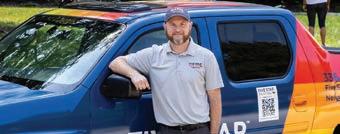
























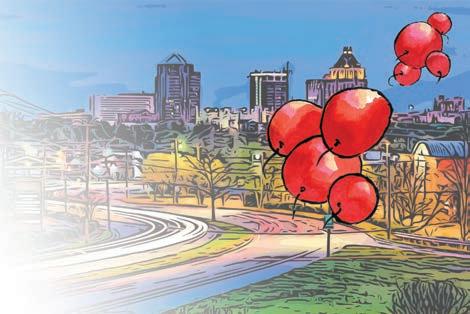






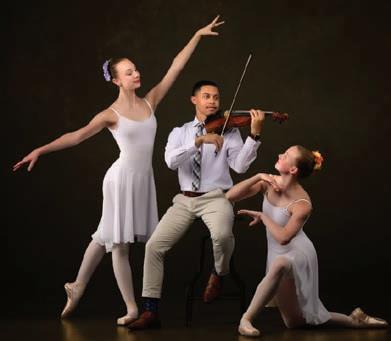
OCTOBER 11TH & 12TH | 11 AM - 4 PM EACH









by Jamie Lisa Forbes
10 AT 6 P.M.
304 South Elm Street, Greensboro, 27401

• “Forbes is an experienced author, and her latest novel is beautifully, even poetically written... A moving, memorable, and fully realized rodeo saga.” KirkusReviews,starred.
• “Those who have an interest in historical fiction...will find this book enlightening. It’s an eye-opening read and an evocative mixture of fact and fiction.” MichaelaGordonifor PortlandBookReview.
• “Forbes showcases her remarkable storytelling skills, promising readers an unforgettable experience.” SuzieHousleyforMidwestBookReview
• “One of my favorite books of the year so far!....Sunny Gale is a very important read for anyone that is searching for a sense of belonging in themselves.” Gracie,Goodreads.
• “I highly recommend this fantastic read to everyone who enjoys historical fiction...You won’t want to miss Sunny Gale.” Bookgirl86,Goodreads.

• “Sunny Gale is a story of perseverance in the face of adversity, a feminist historical novel and a compelling adventure story all rolled into one neat little package.” Linda,Goodreads
• “Sunny Gale is an atmospheric treasure of a novel.....Forbes is the kind of writer that only comes around once in a long while...” Ellen,Goodreads
• “I loved the overall message of this story and the way that the ending wrapped everything up, while still leaving room for the reader’s imagination. An absolutely thrilling read!” LauraLee,Goodreads

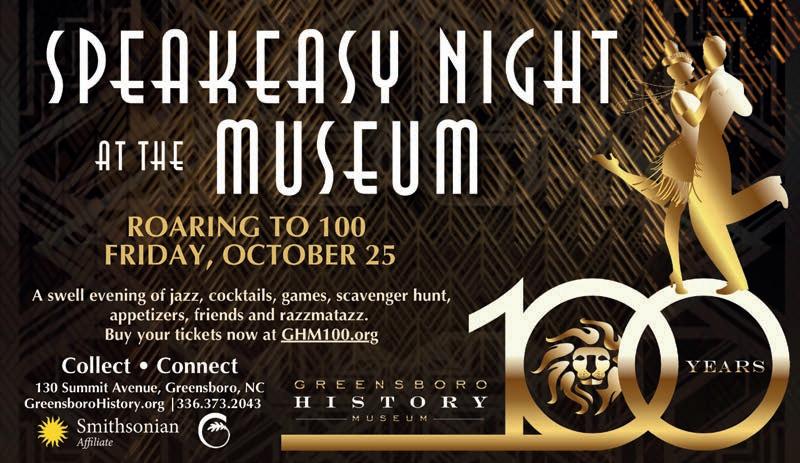
















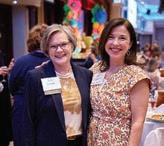
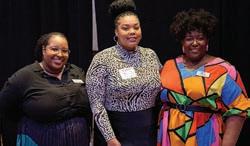
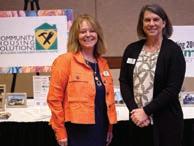
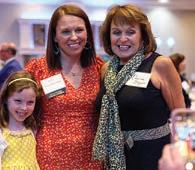




Koury Convention Center • March 14, 2024
Photographs by Glasbear












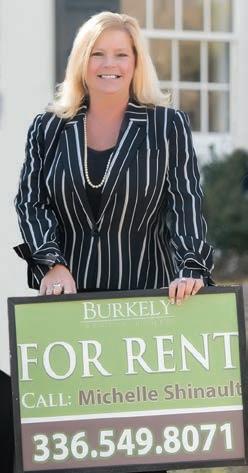

“I


United Way of Greater Greensboro’s Tocqueville Women’s Gathering
May 1, 2024
Photographs by Becky VanderVeen

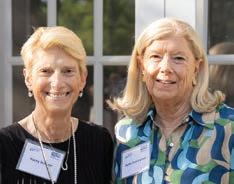




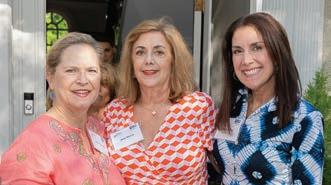
Indelible Opening GreenHill Center for NC Art
July 25, 2024
Photographs by Ariana Davis & Juniper Nie


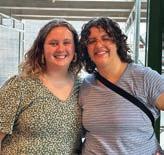
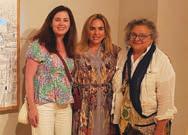






By R enee SkudR a
I have only seen him once, in profile, passing from the living room into the kitchen: a dapper, middle-aged man in 1940s clothing — attired in a patterned knit vest, doublepleated gabardine trousers, dark brown loafers and a fedora. Startled, as I jumped up from my seat at the kitchen table, he vanished.

I’m a largely rational creature and once considered myself the sort of person who didn’t believe in ghosts. I’ve read in paranormal literature that a ghost sighting is often referred to as an example of “ontological shock,” an event that causes one to question one’s worldview. Believe me. It has.
I have witnessed lights and spigots turning on and off, objects moving or falling, shadows that pass through walls, freezing cold spots with the central heating set at 74 degrees, a voice from my computer screaming “You’ve got mail!” at 3 a.m.
I have had to conclude that a dead person interacting with the living world — aka a ghost — inhabits my house. While you may scoff at that, spending only one night in my house would make you a believer. For the moment, my ghost and I have reached an uneasy peace. Neither of us is leaving.
However, I am in good company in believing that my roommate/apparition exists. According to a survey conducted by the Pew Research Center, close to 20 percent of people say they have seen a ghost. That equates to more than 50 million ghosts out there in the U.S. alone. A 2019 Ipsos poll found that 46 percent of Americans say they believe in ghosts.
The idea that the dead remain with us in spirit is indeed an
ancient and abiding concept. From the Bible to Shakespeare’s Macbeth, from TV ghost hunting shows to my own kitchen, we’re obsessed by specters. Skeptics keep the debate going. They argue that, if ghosts are real, their existence will be verified through controlled experiments. They posit that reports of ghosts can be explained by psychology, misperceptions, mistakes and hoaxes. According to a 2019 article entitled “The Science of Ghosts” in Science News Explores, scientists found zero evidence that ghosts exist. What scientists have discovered, though, are a multitude of reasons why people might feel they have had ghostly encounters — hallucinations and pareidolia top the list. Pareidolia is a tendency for the human brain to find patterns amongst ambiguous stimuli. Is that a face you see in a cloud? Effectively, the brain finds meaning in the meaningless. Still ghost stories persist. Prime Minister Winston Churchill and First Lady Grace Coolidge swore they saw Abraham Lincoln in the Yellow Oval Room. George Washington is said to have regularly revisited the historic chamber at Mount Vernon where he died in 1799. The ghost of former N.C. Governor Daniel Fowle has been haunting the Governor’s mansion.
As I’m writing this, the light suddenly flickers in the den and once again my volume of Black’s Law Dictionary has fallen from its shelf and lies, open, in the middle of the floor. I replace the book, as I have so many times before, and calmly say, “Please leave the law books alone.” When you live with things that go bump in the night, you have to give them a modicum of respect and hope they do the same for you. OH
After working in law for 22 years Renee Skudra left — with no regrets — to pursue her passions: writing, photography, fast horses, slow dancing, men with dimpled chins and dark chocolate. She lives in Greensboro with her son, a Civil War historian, and their Bichon Frisé, Jackson.

